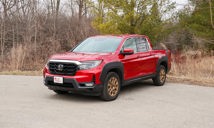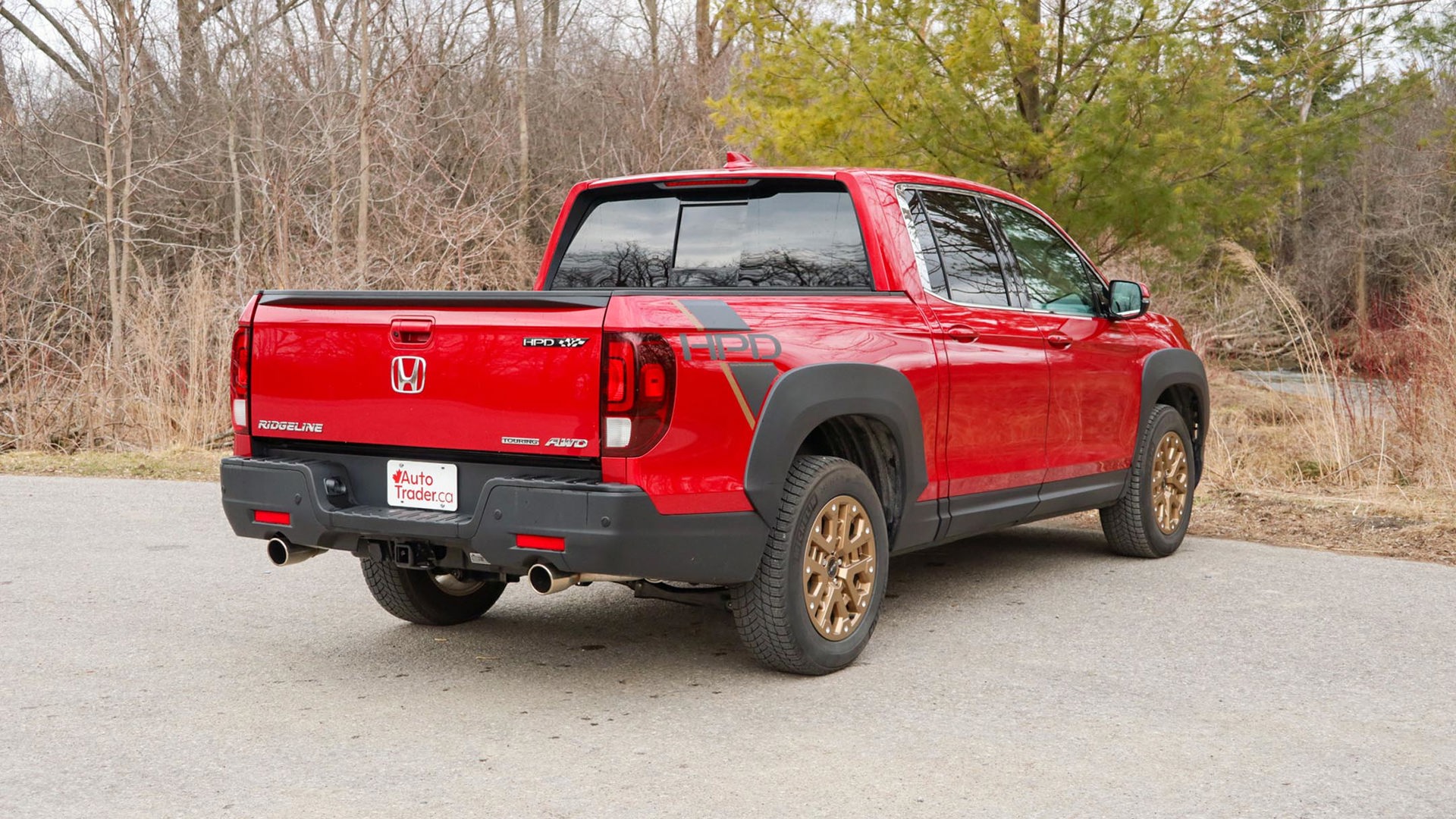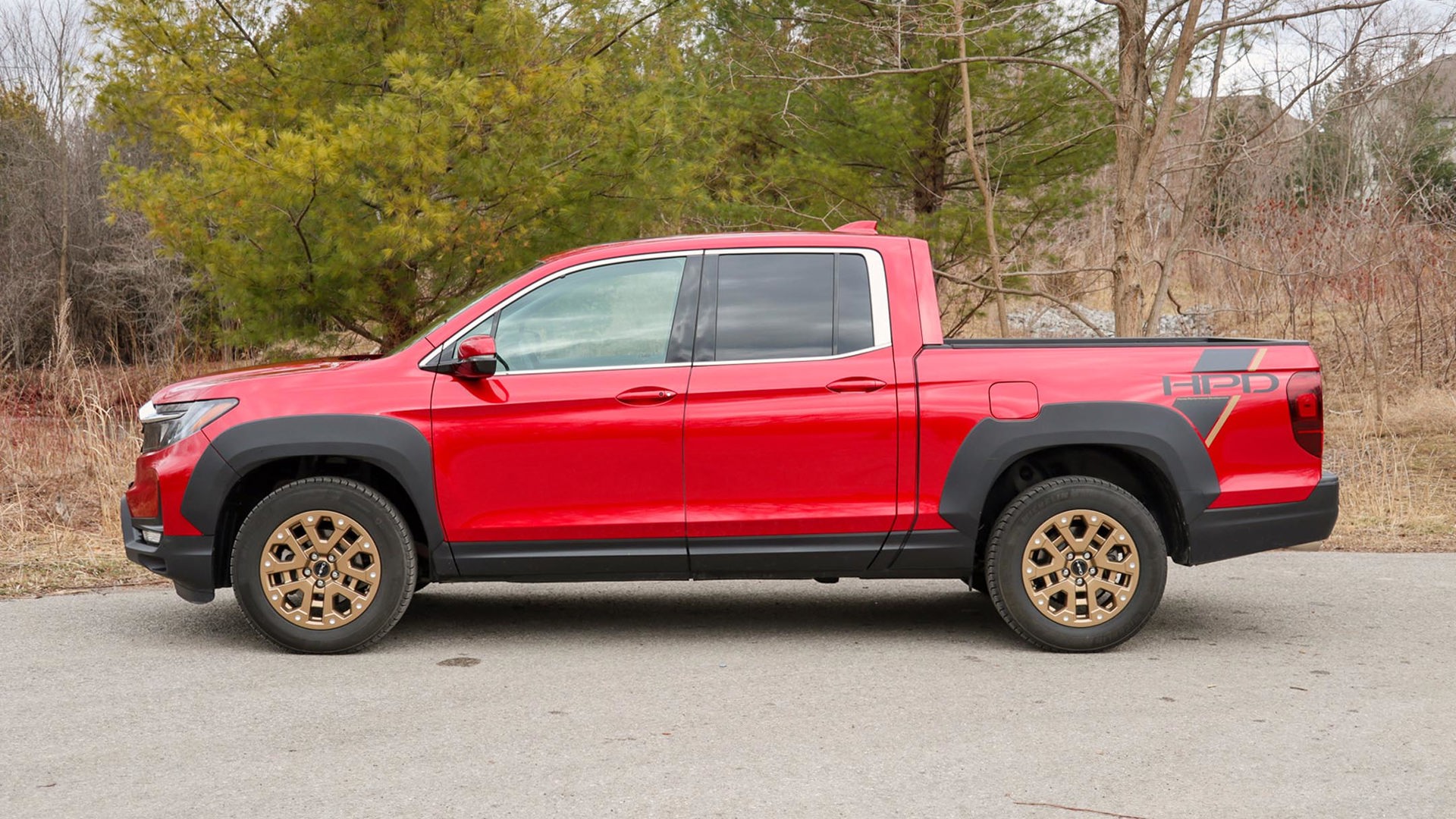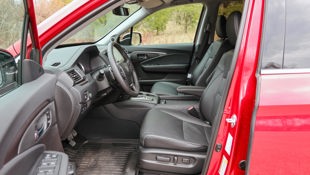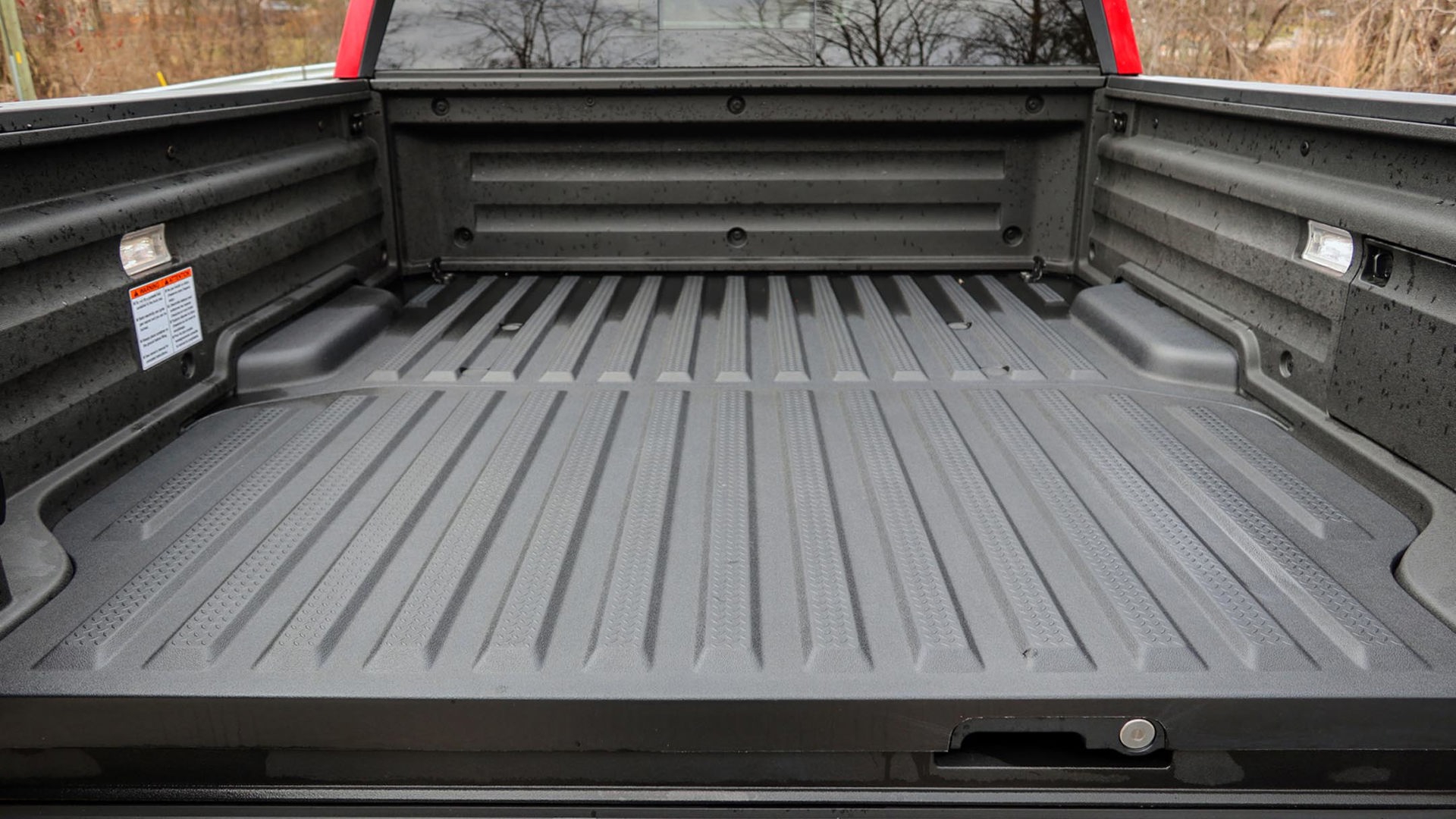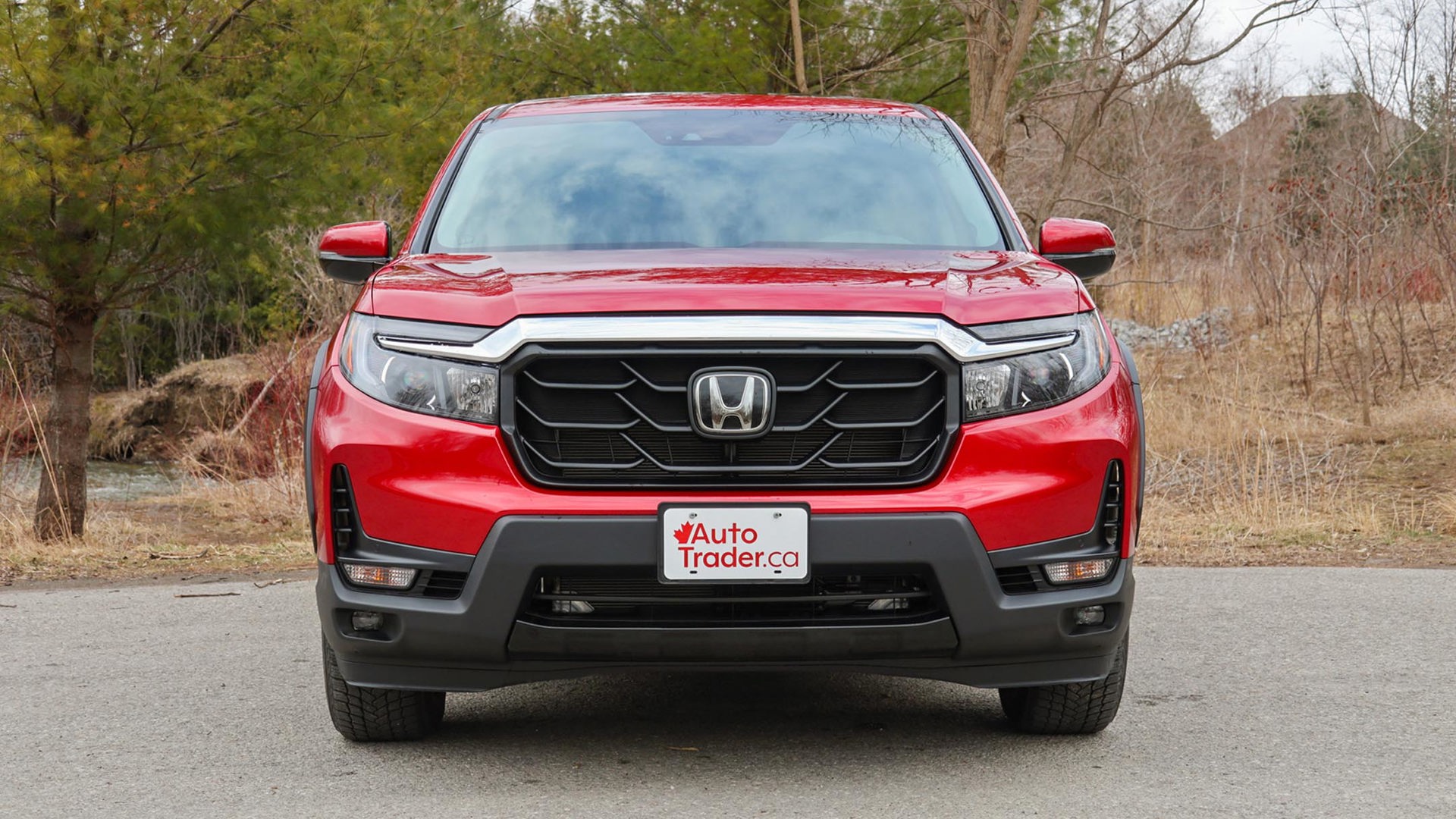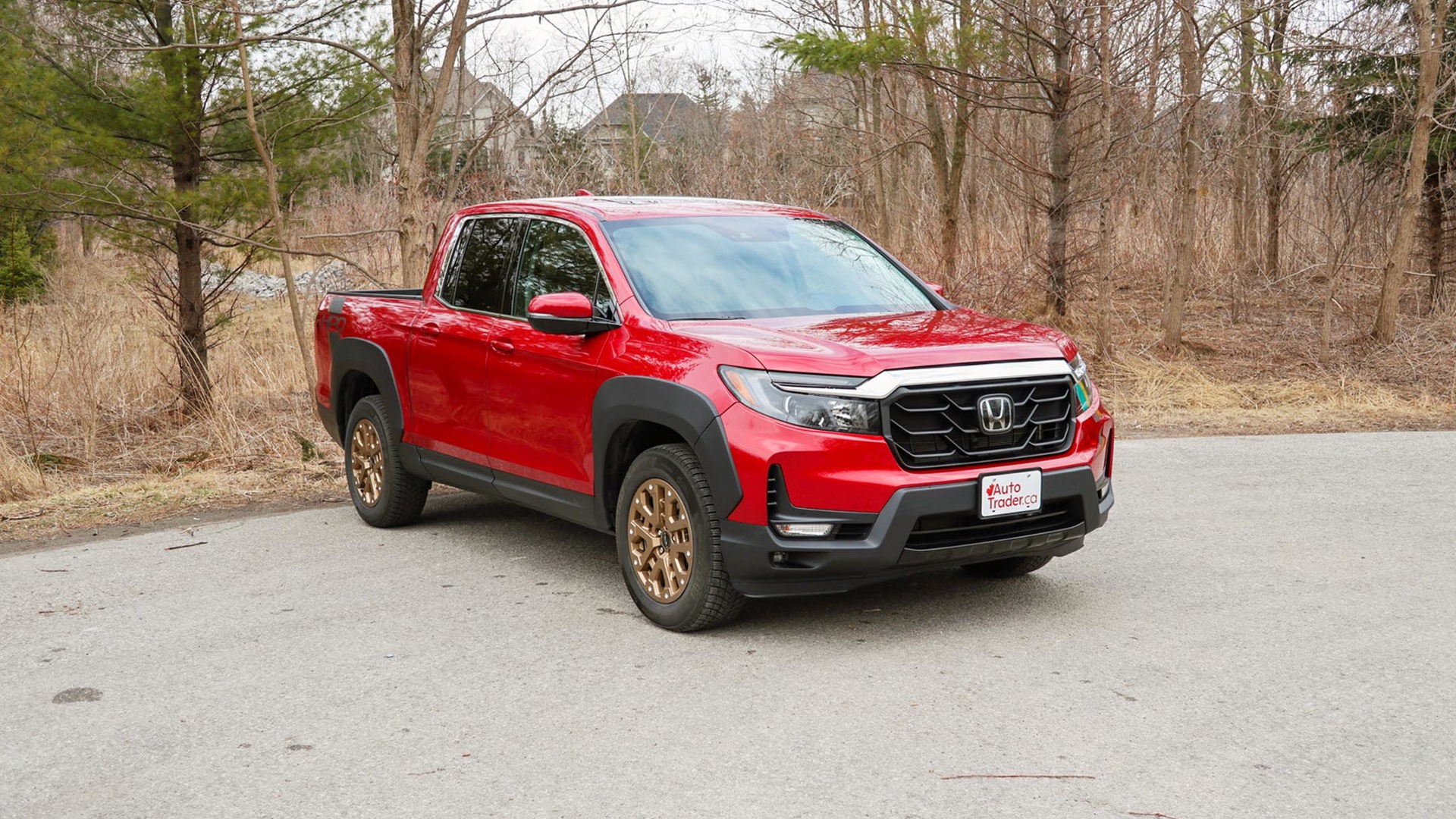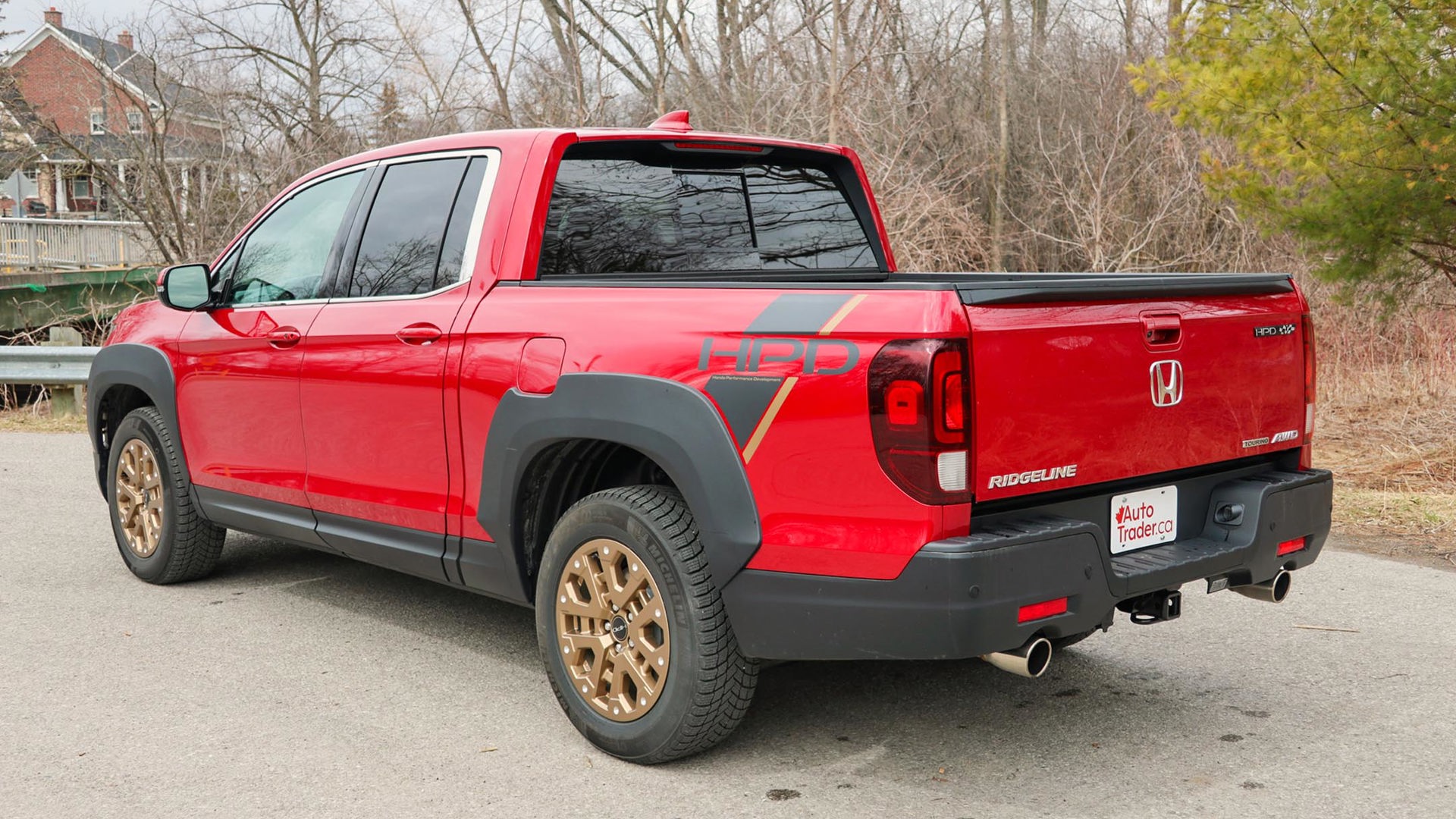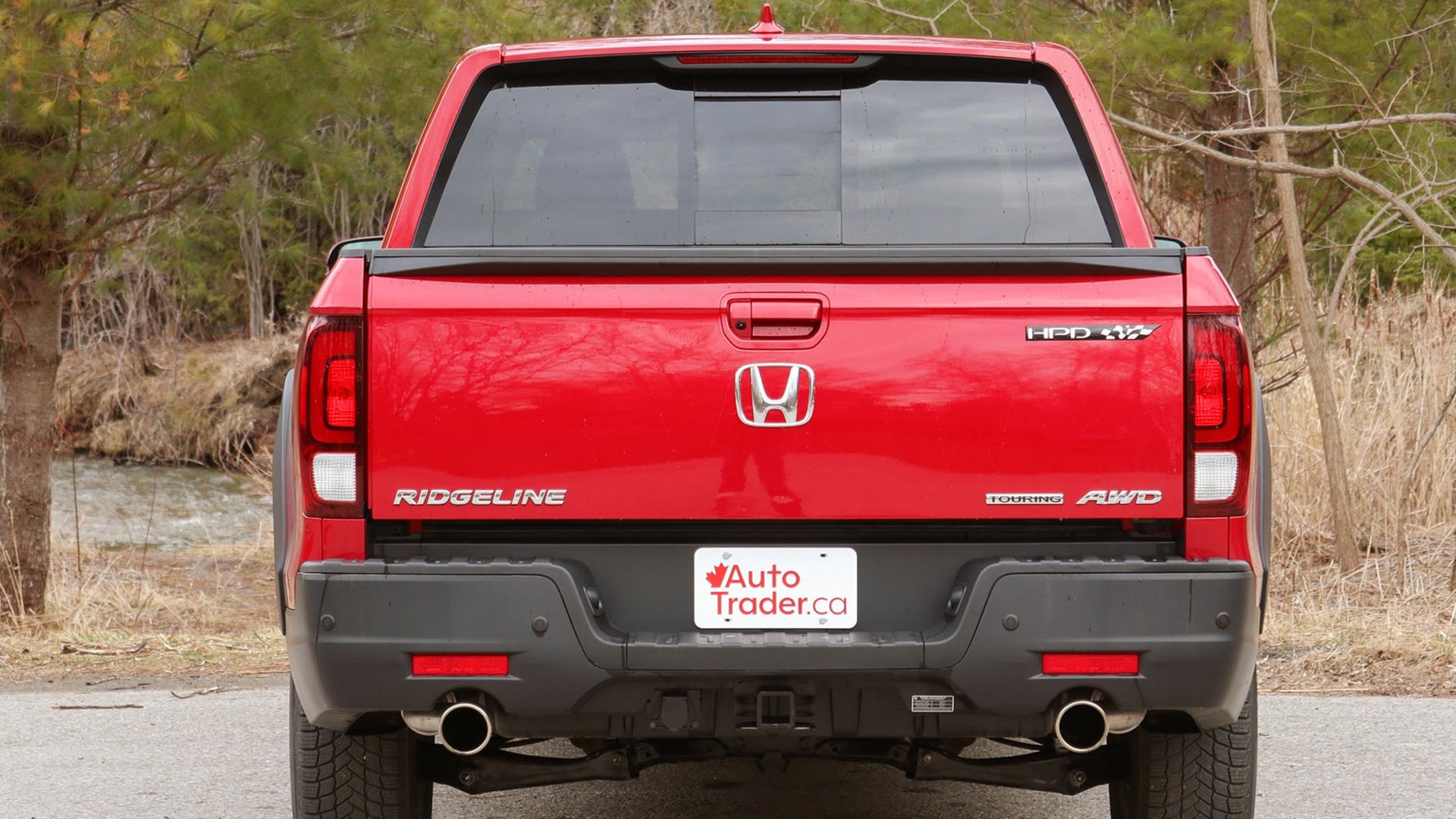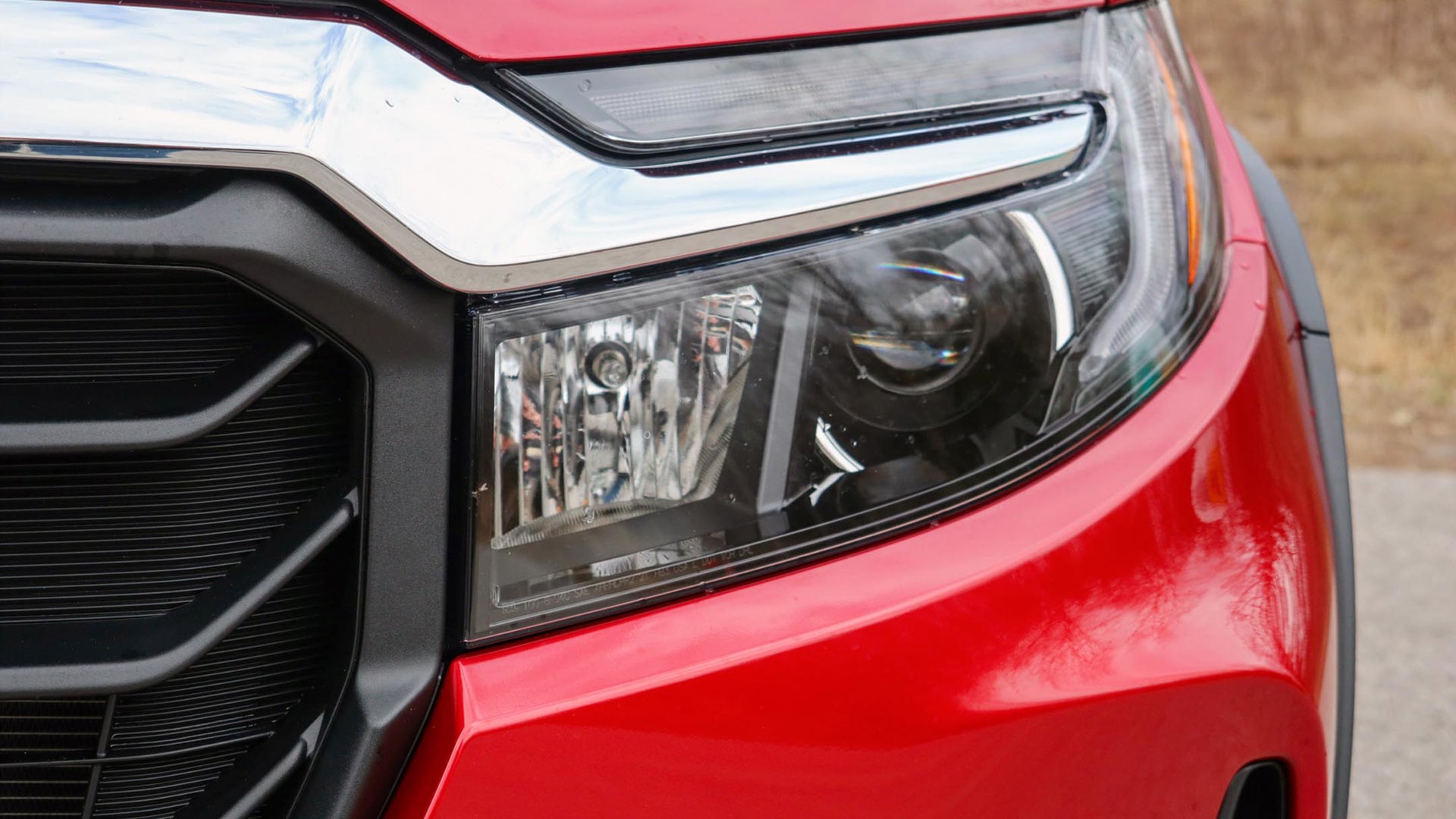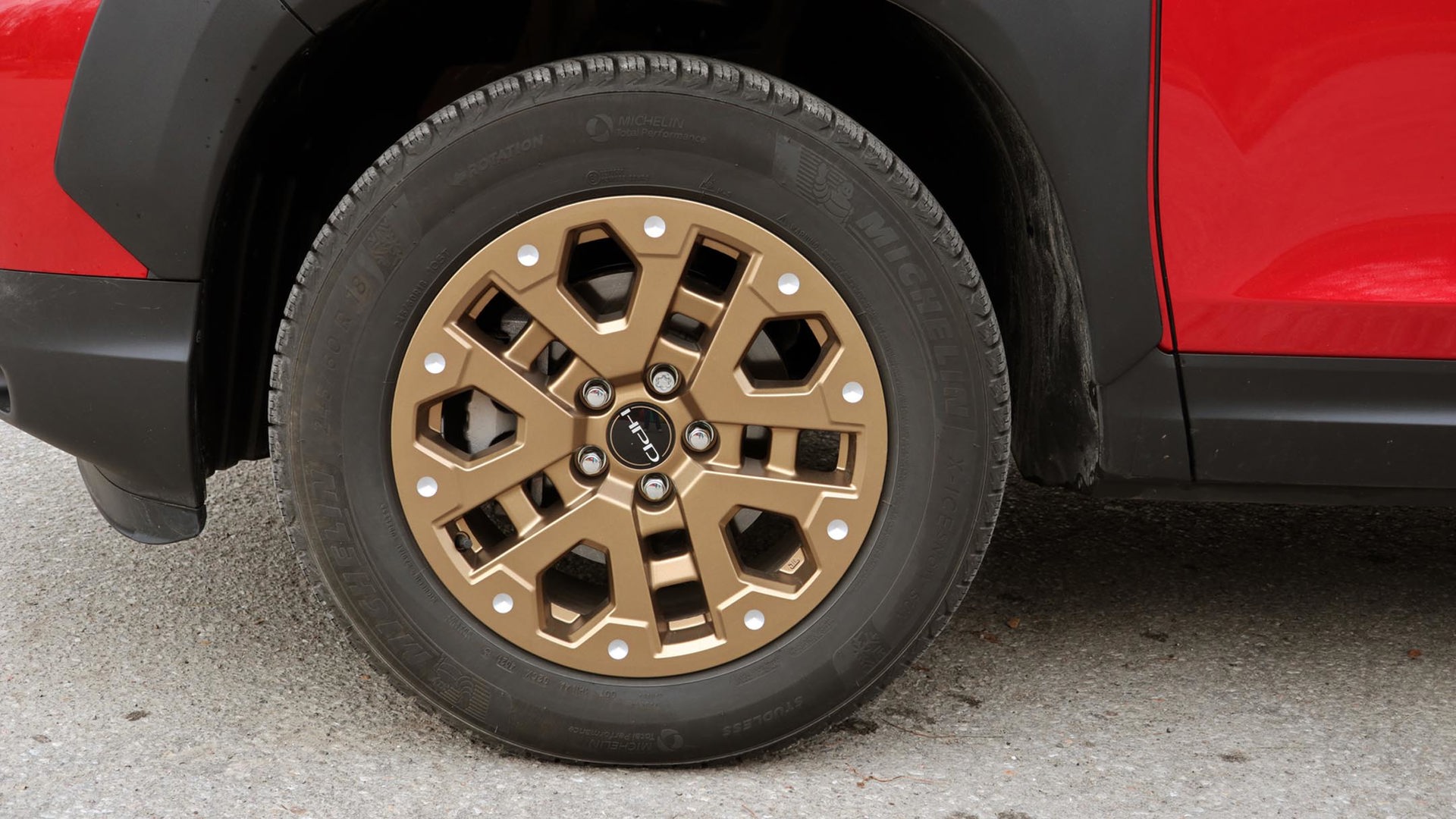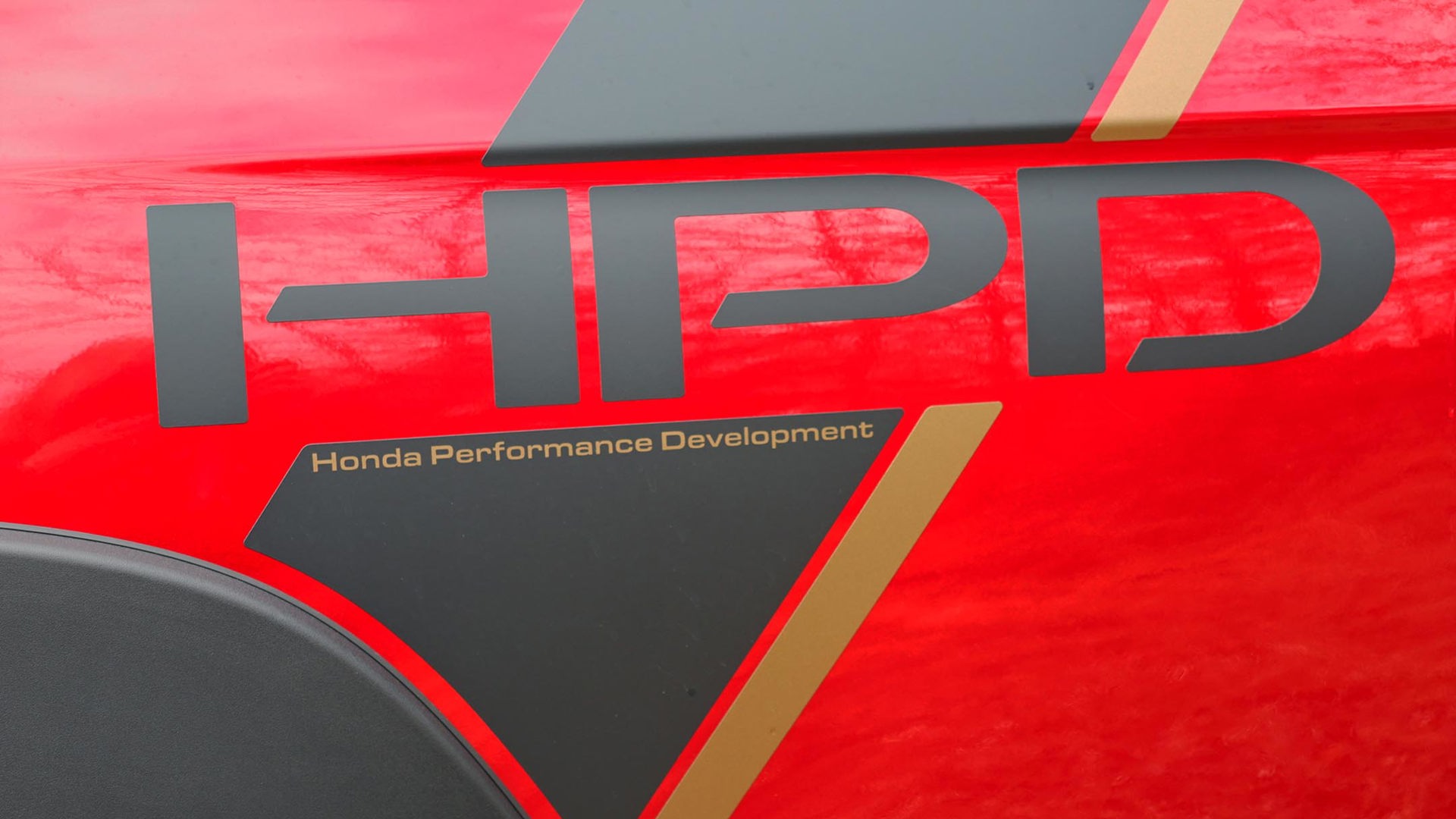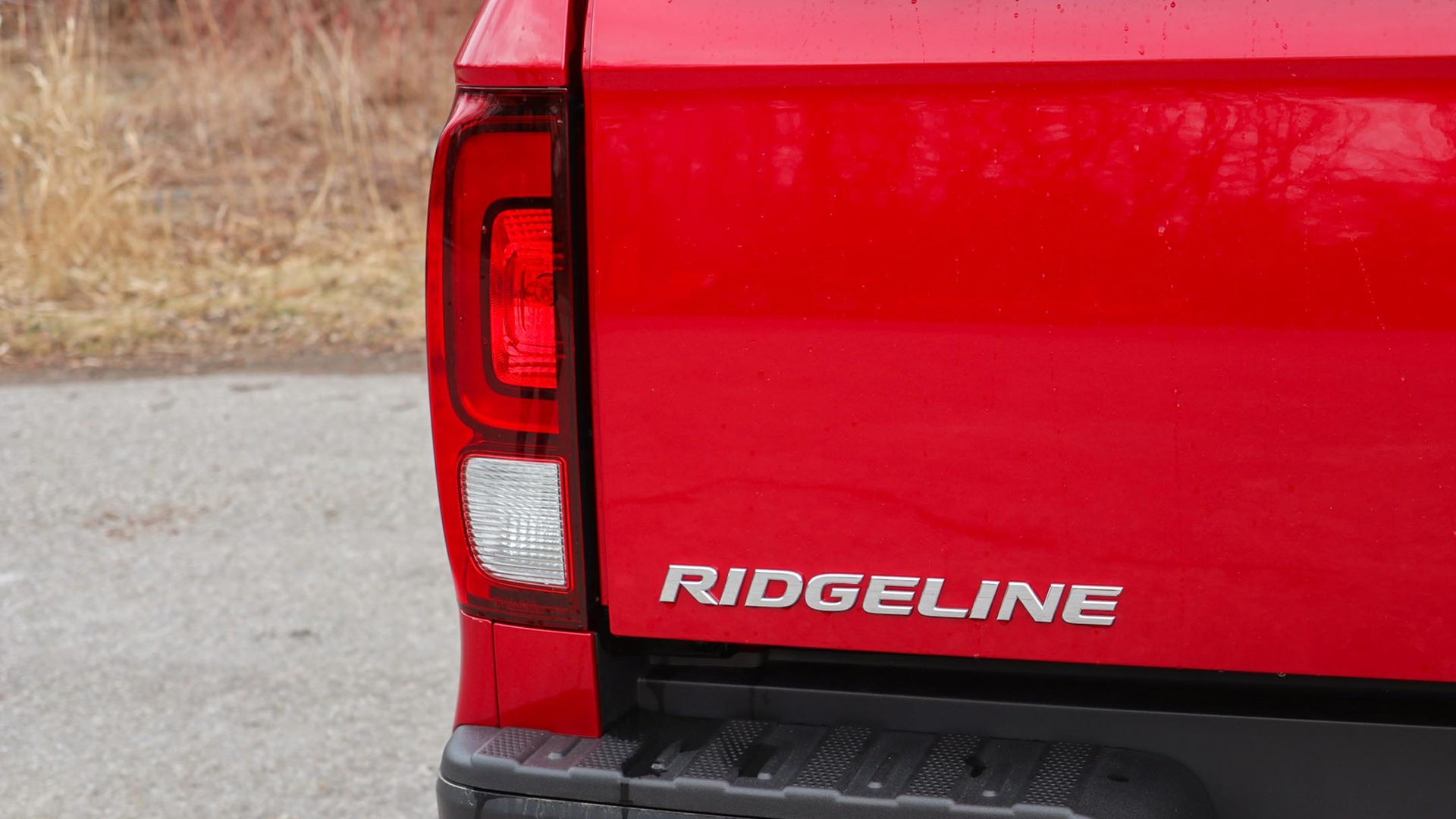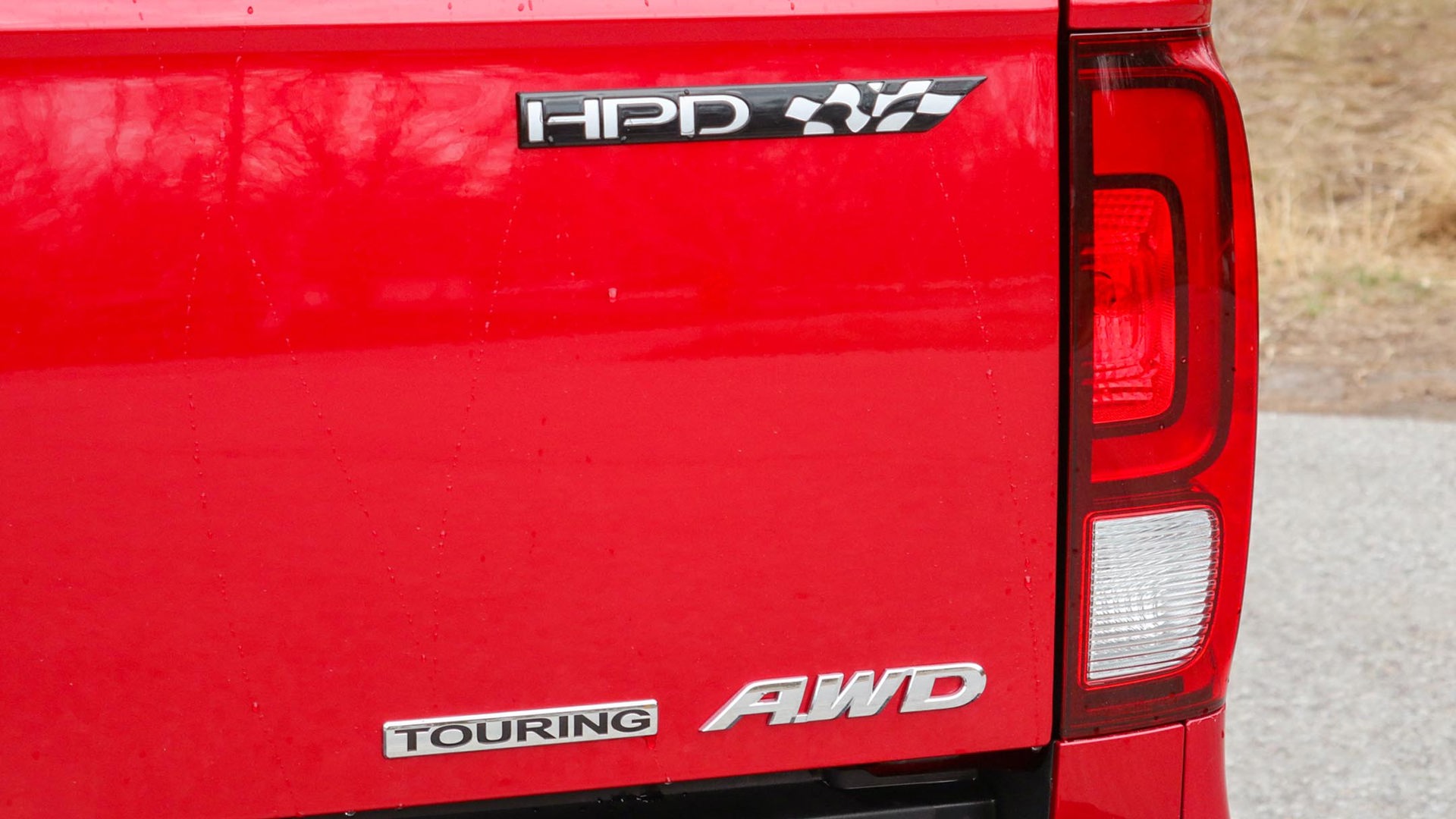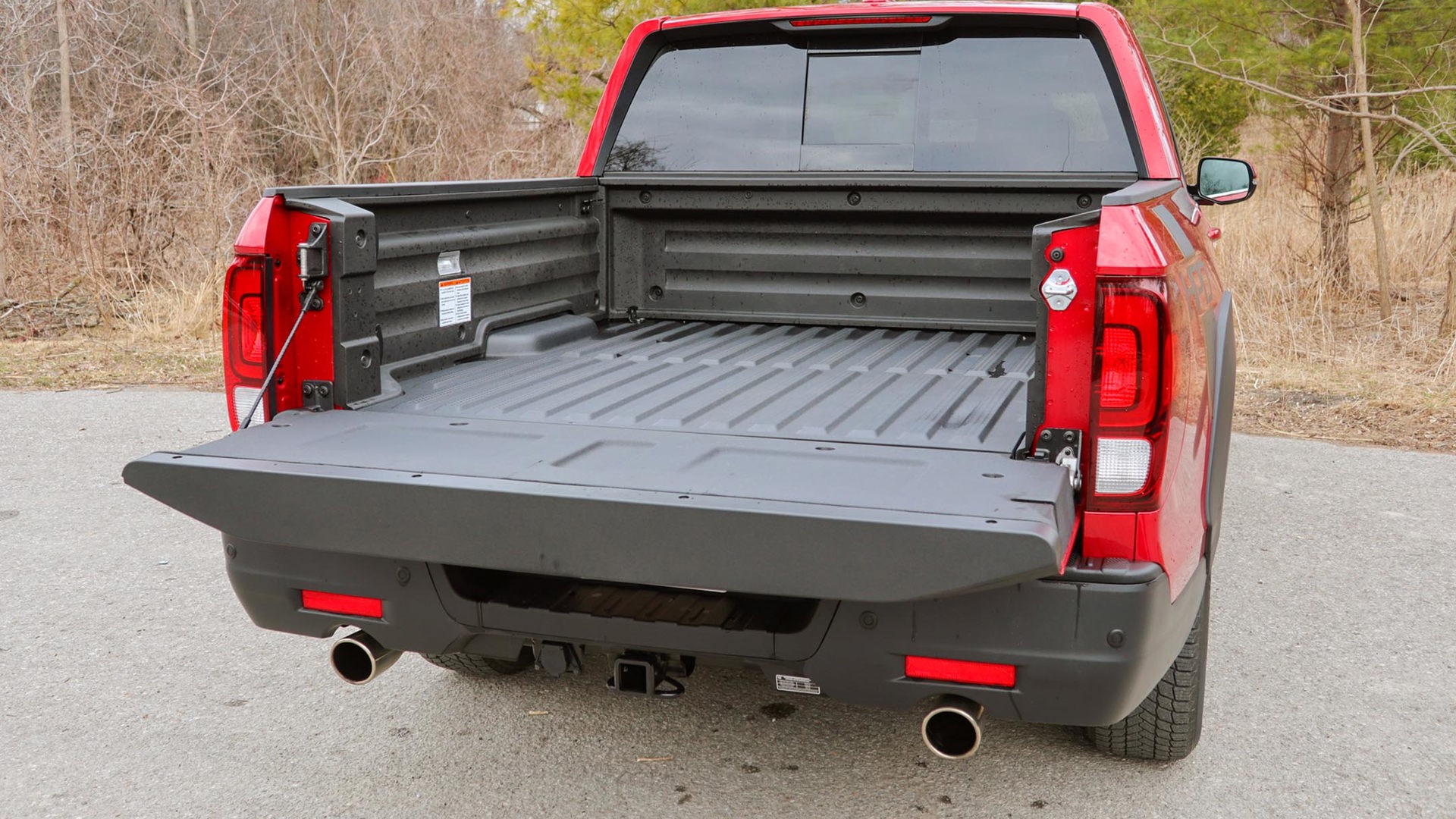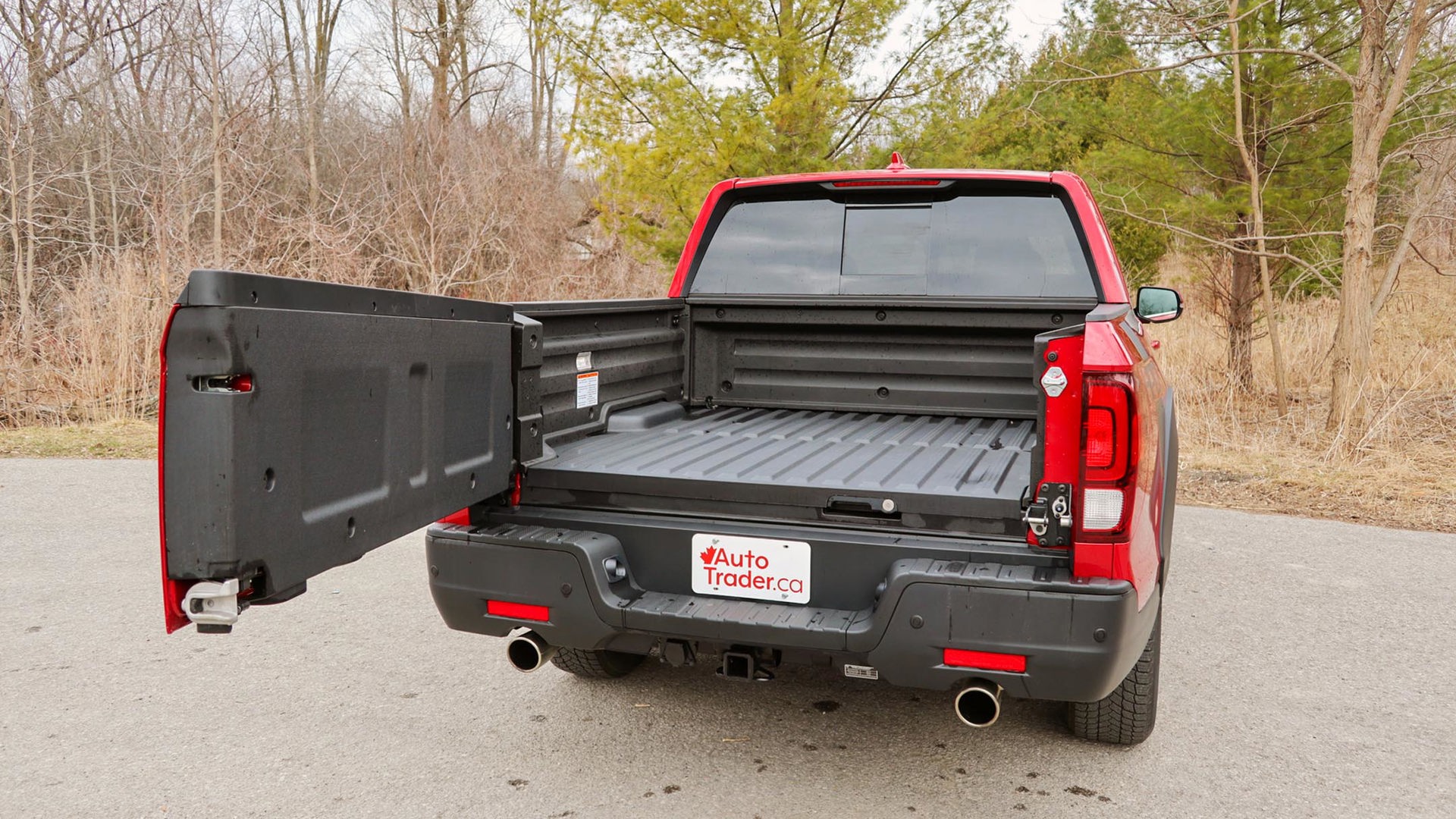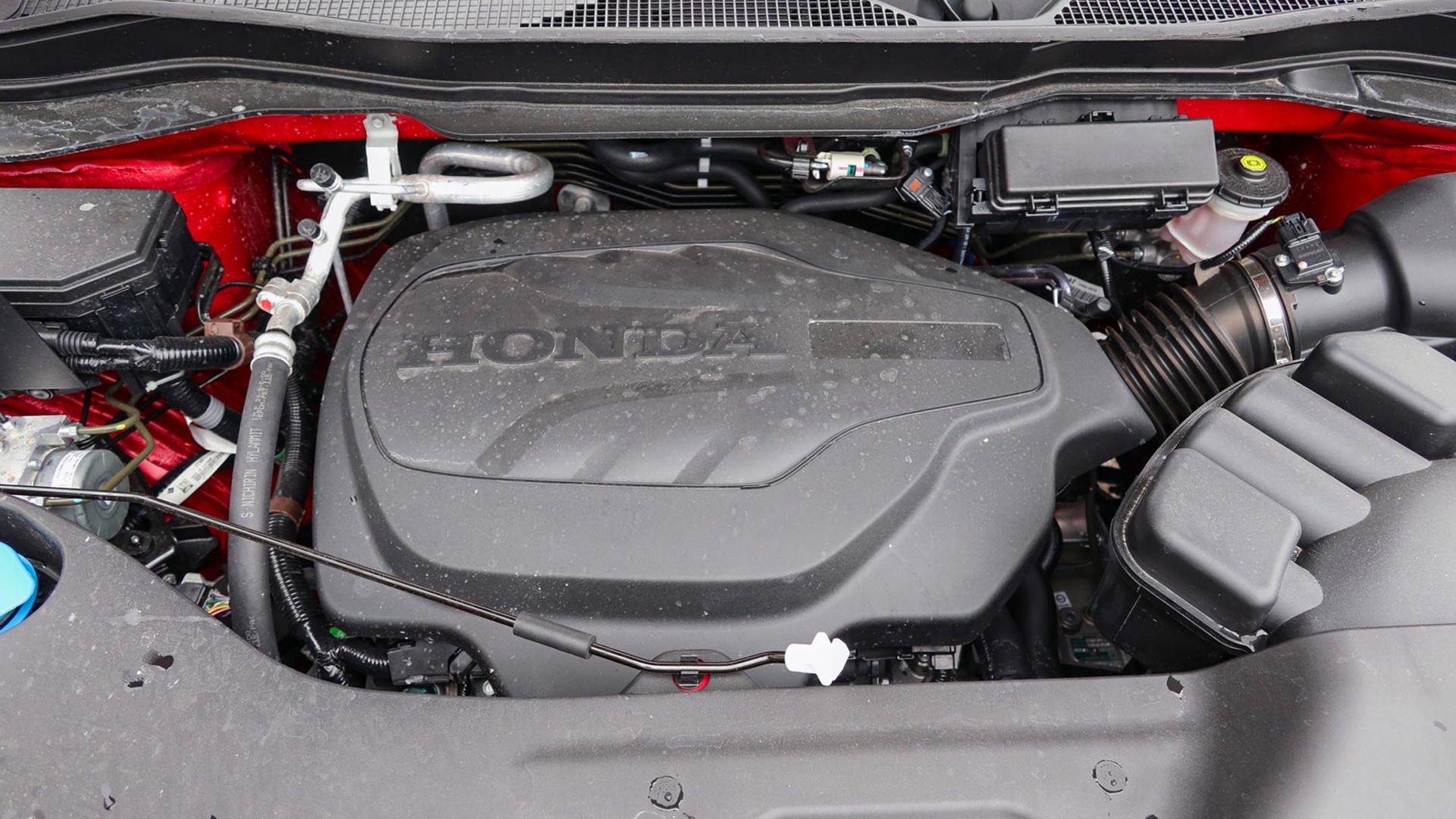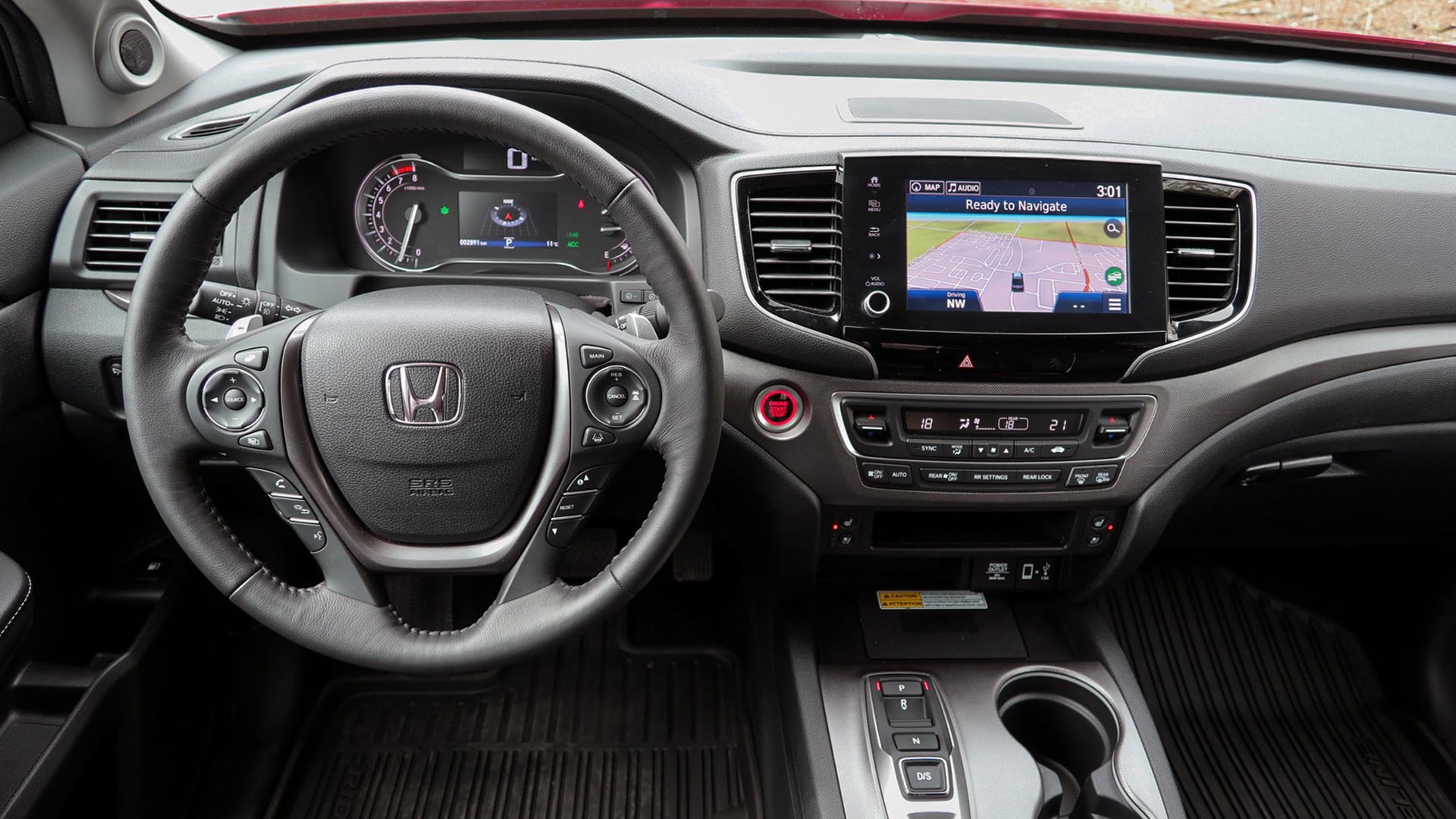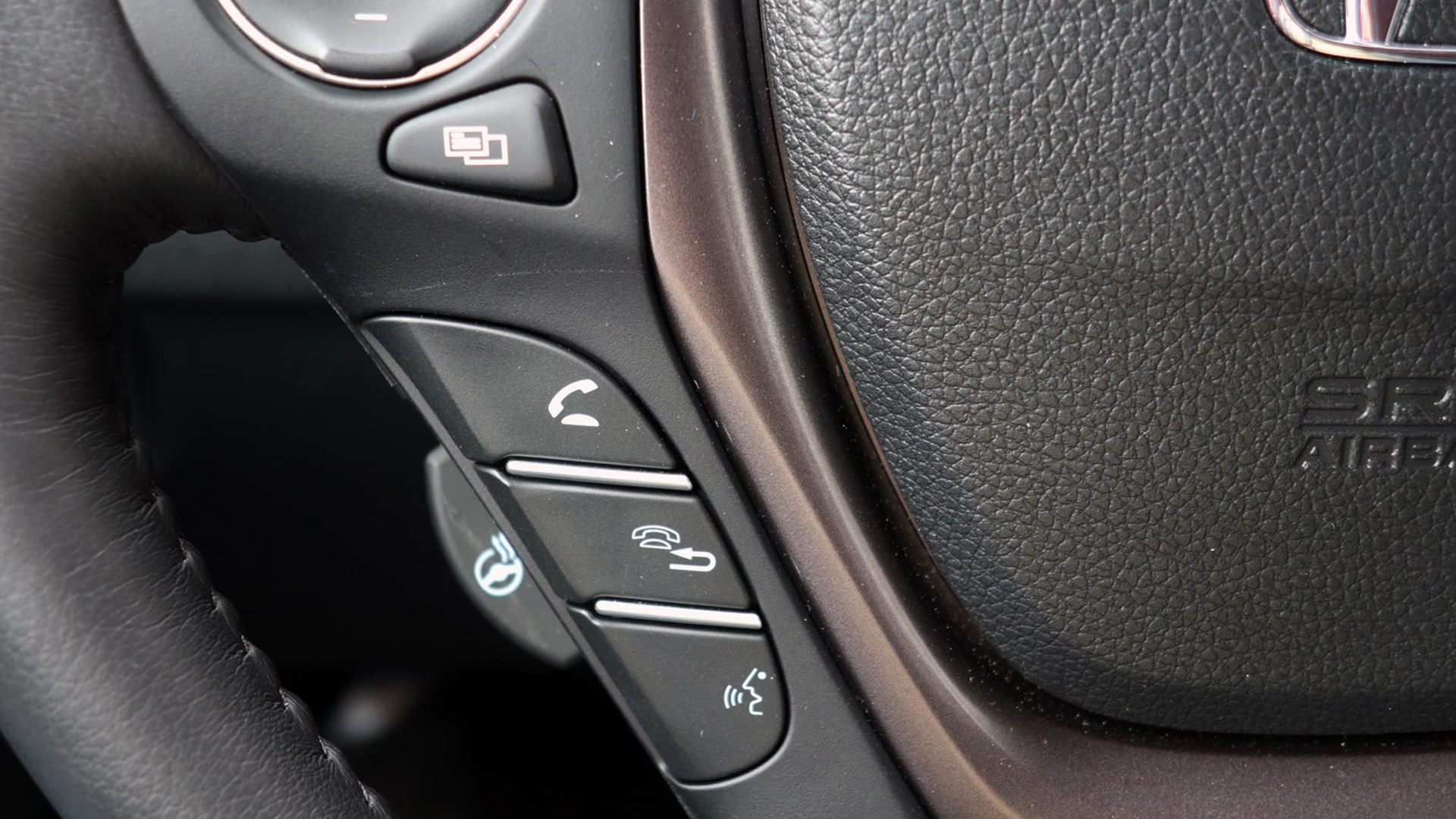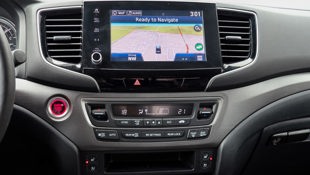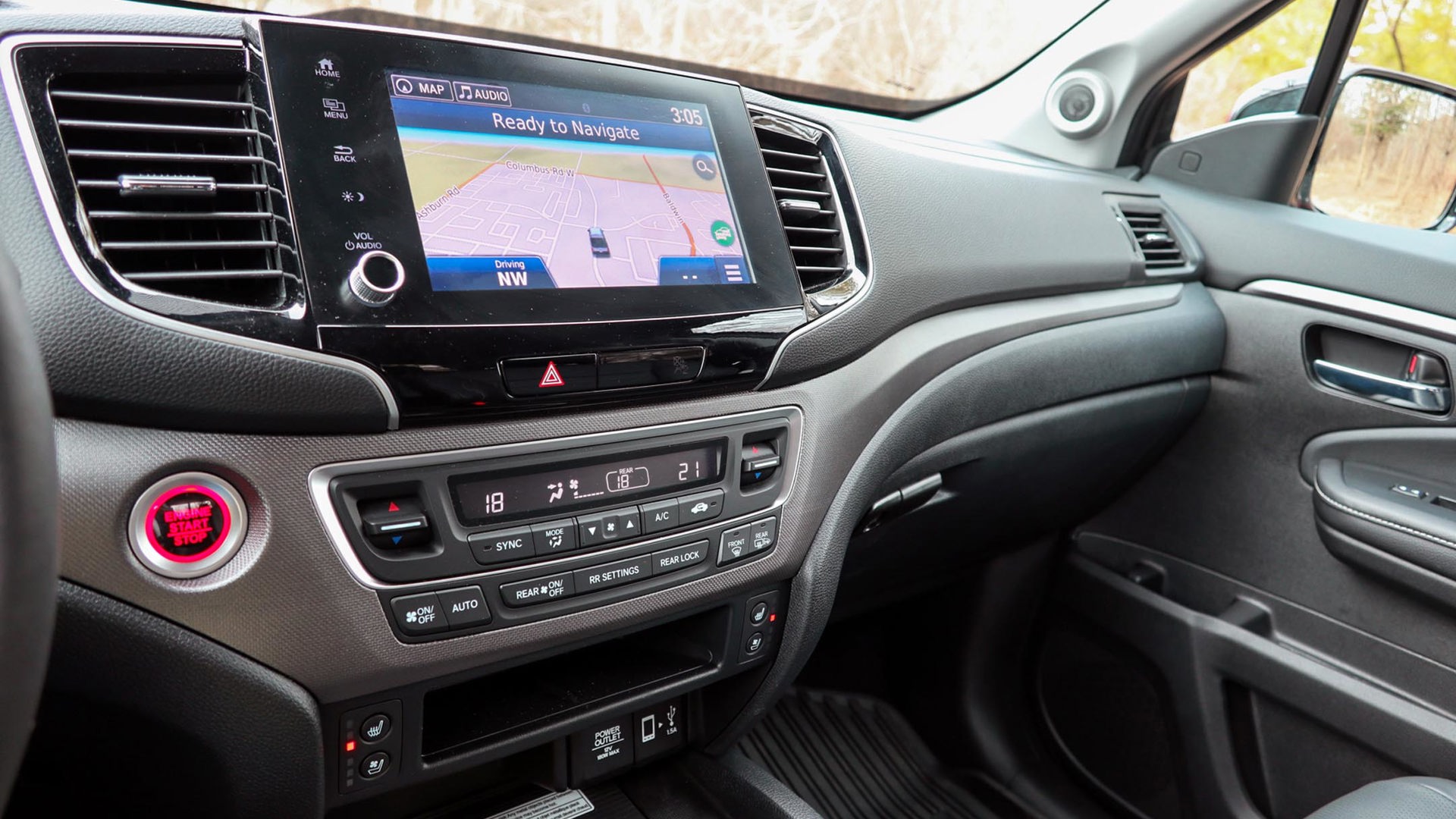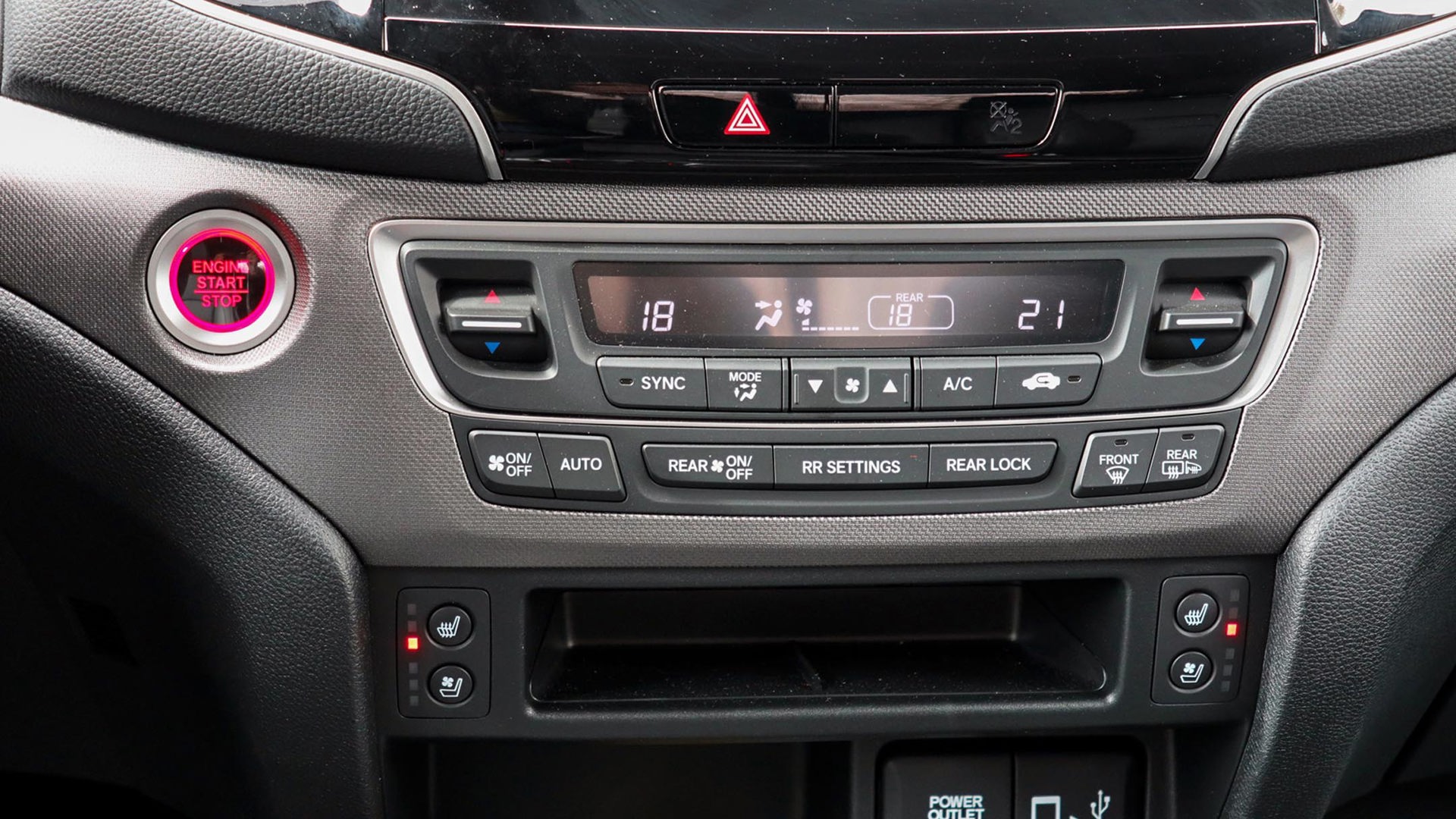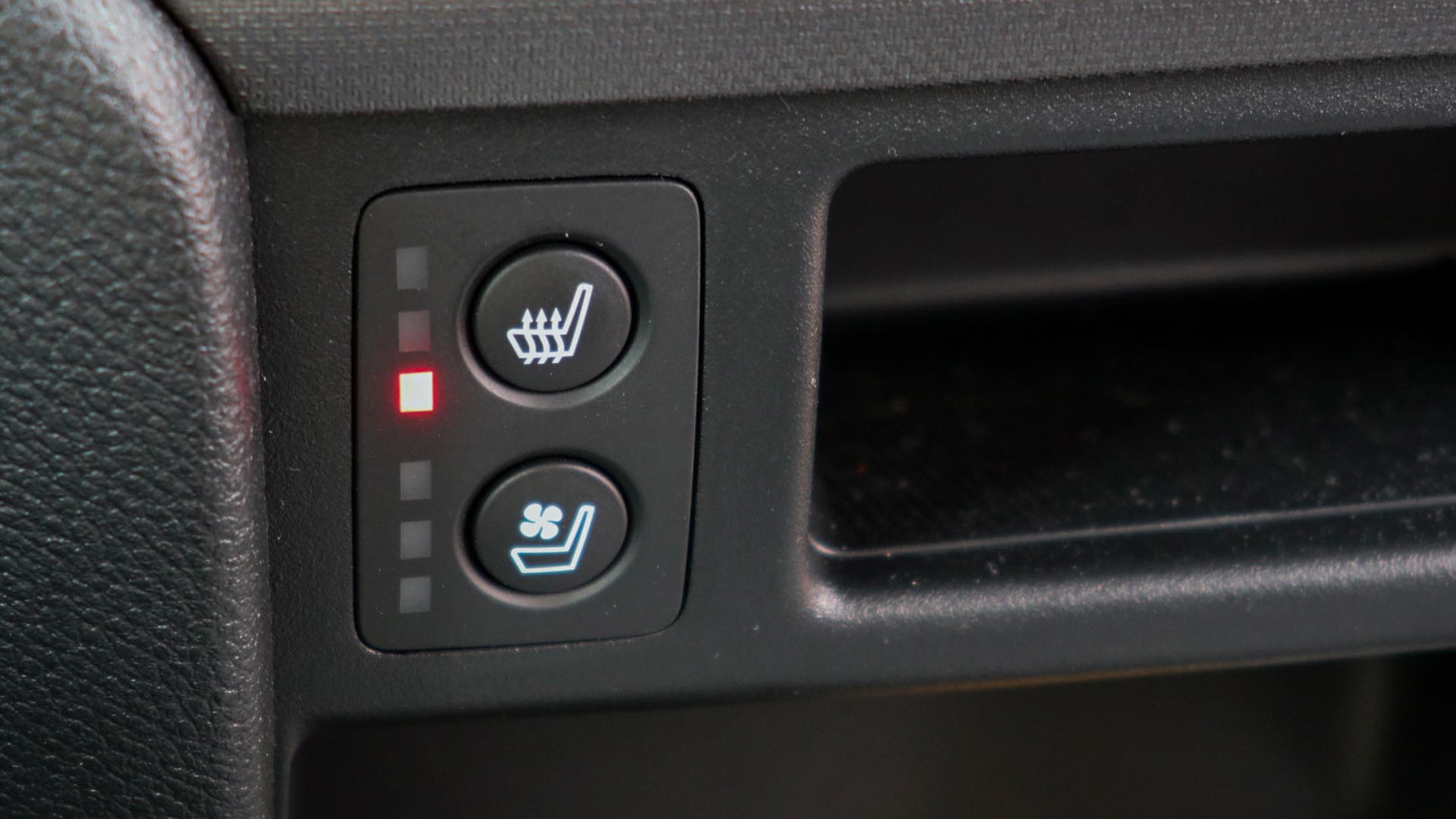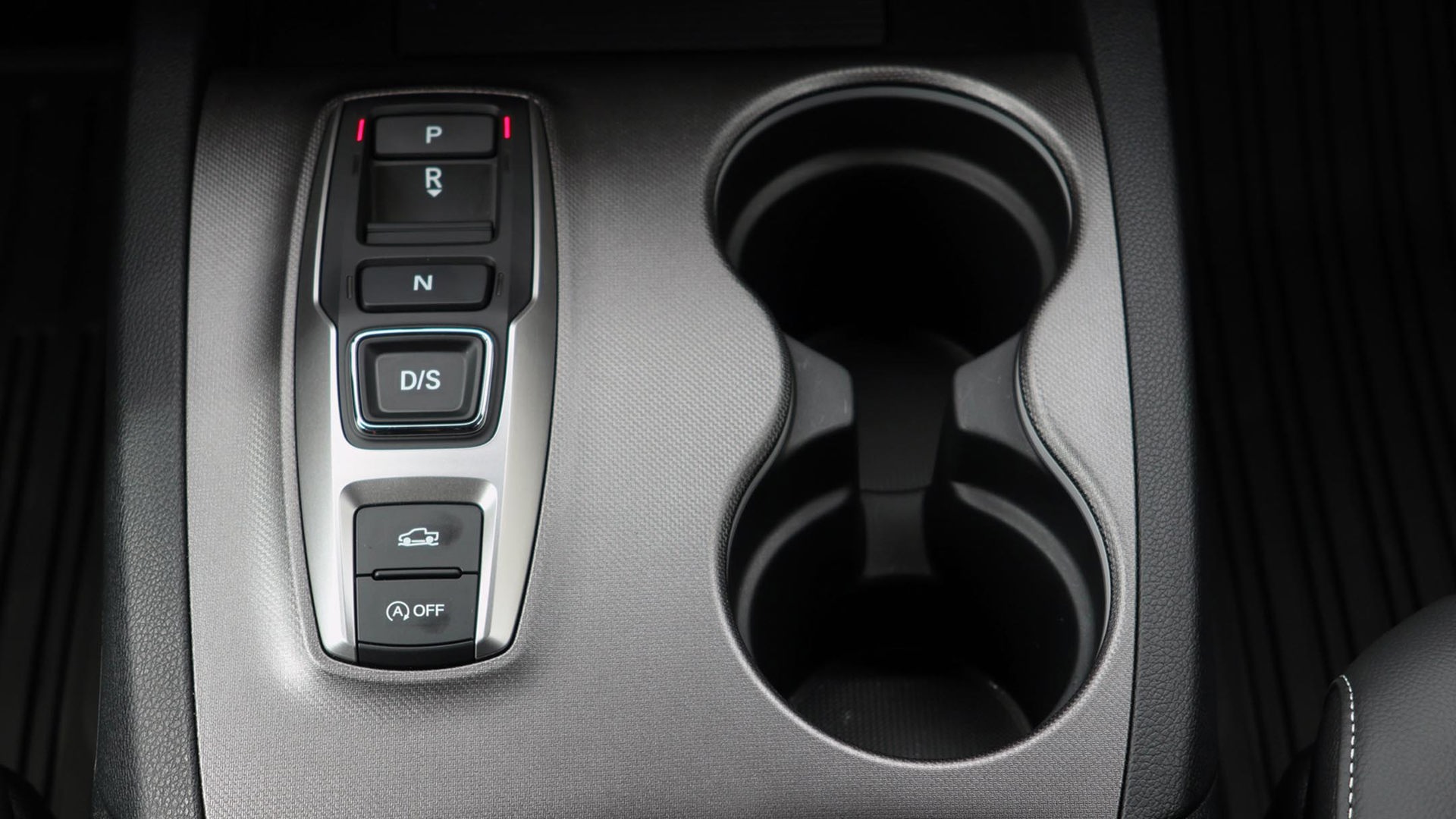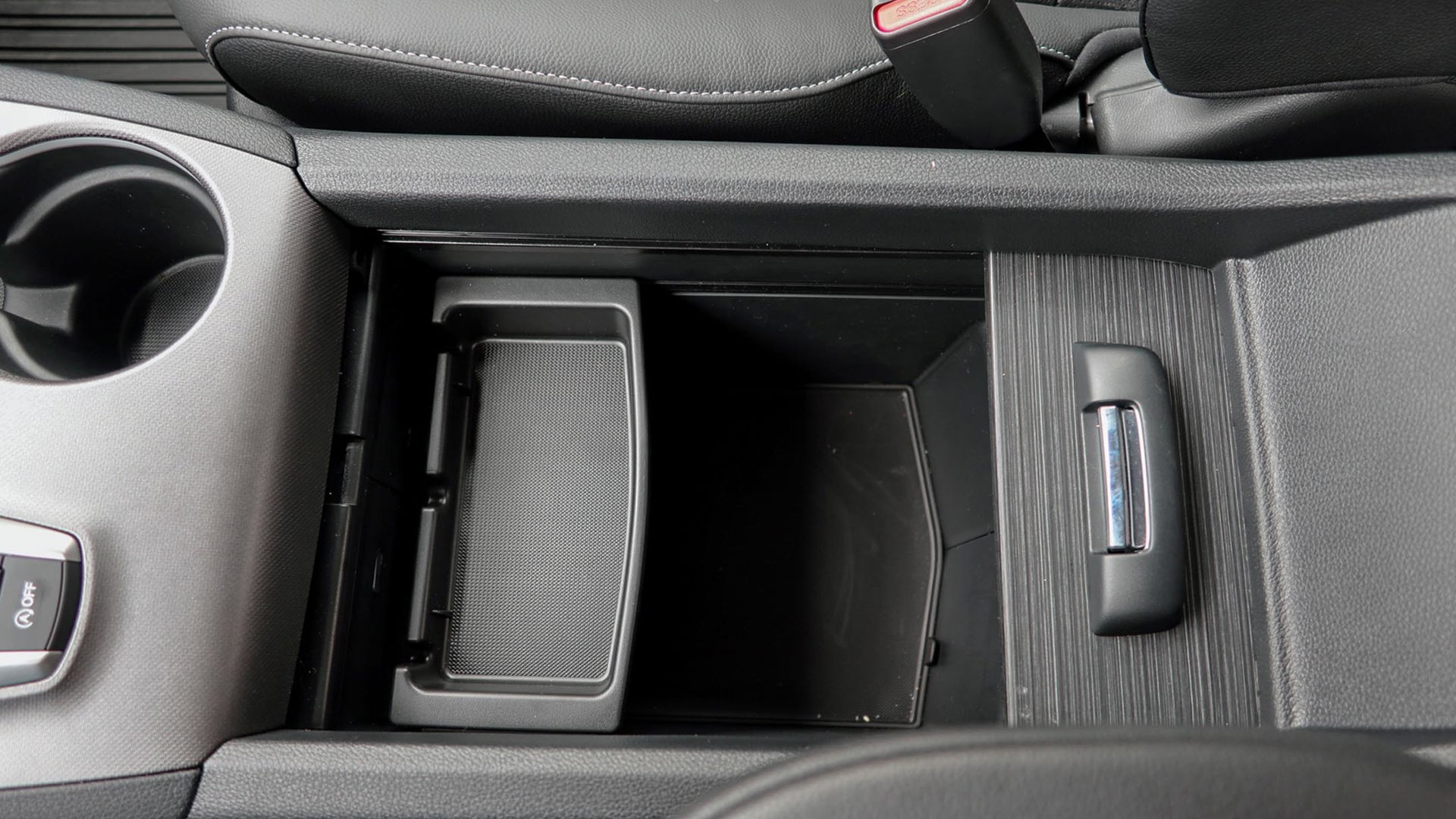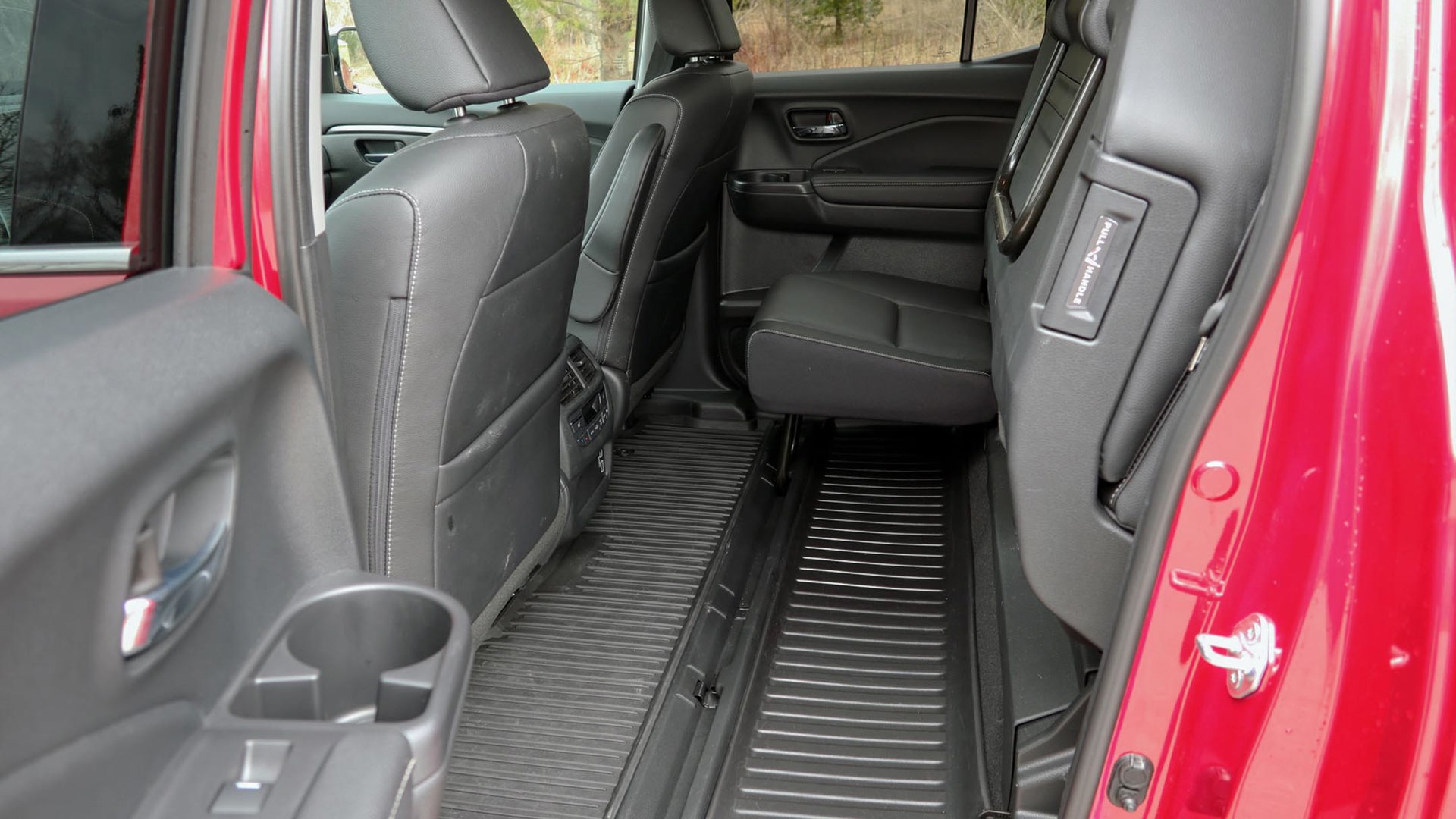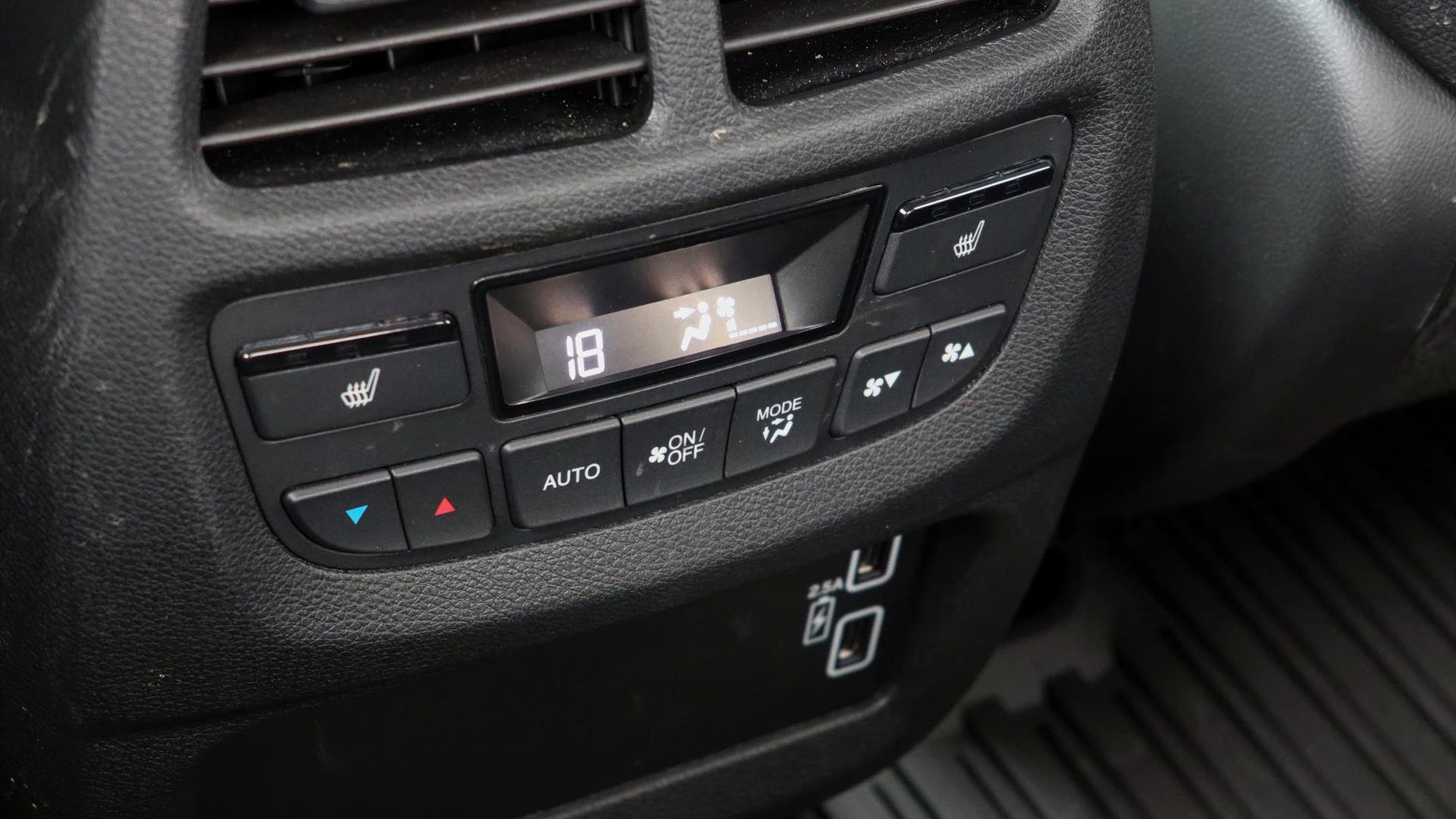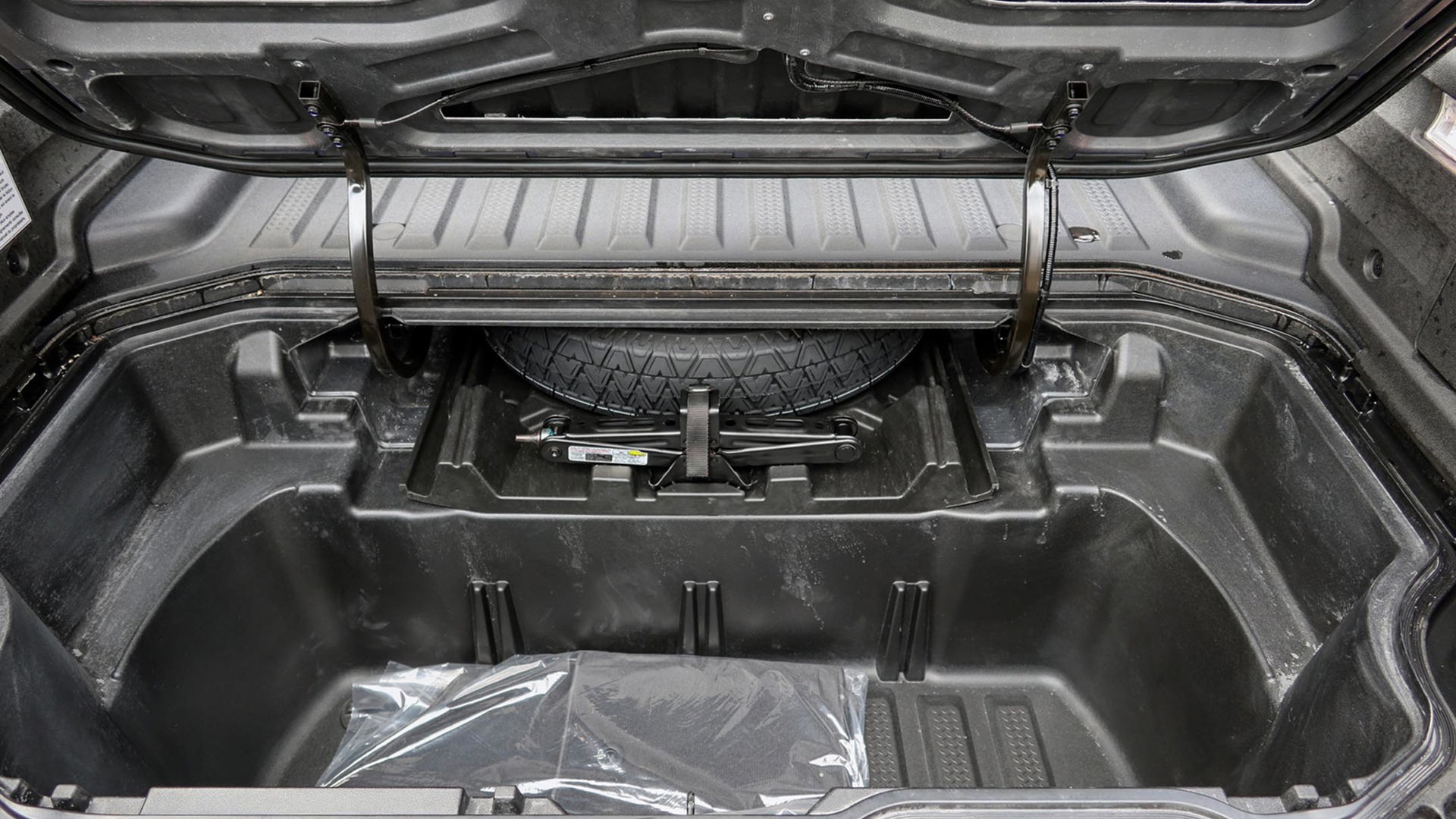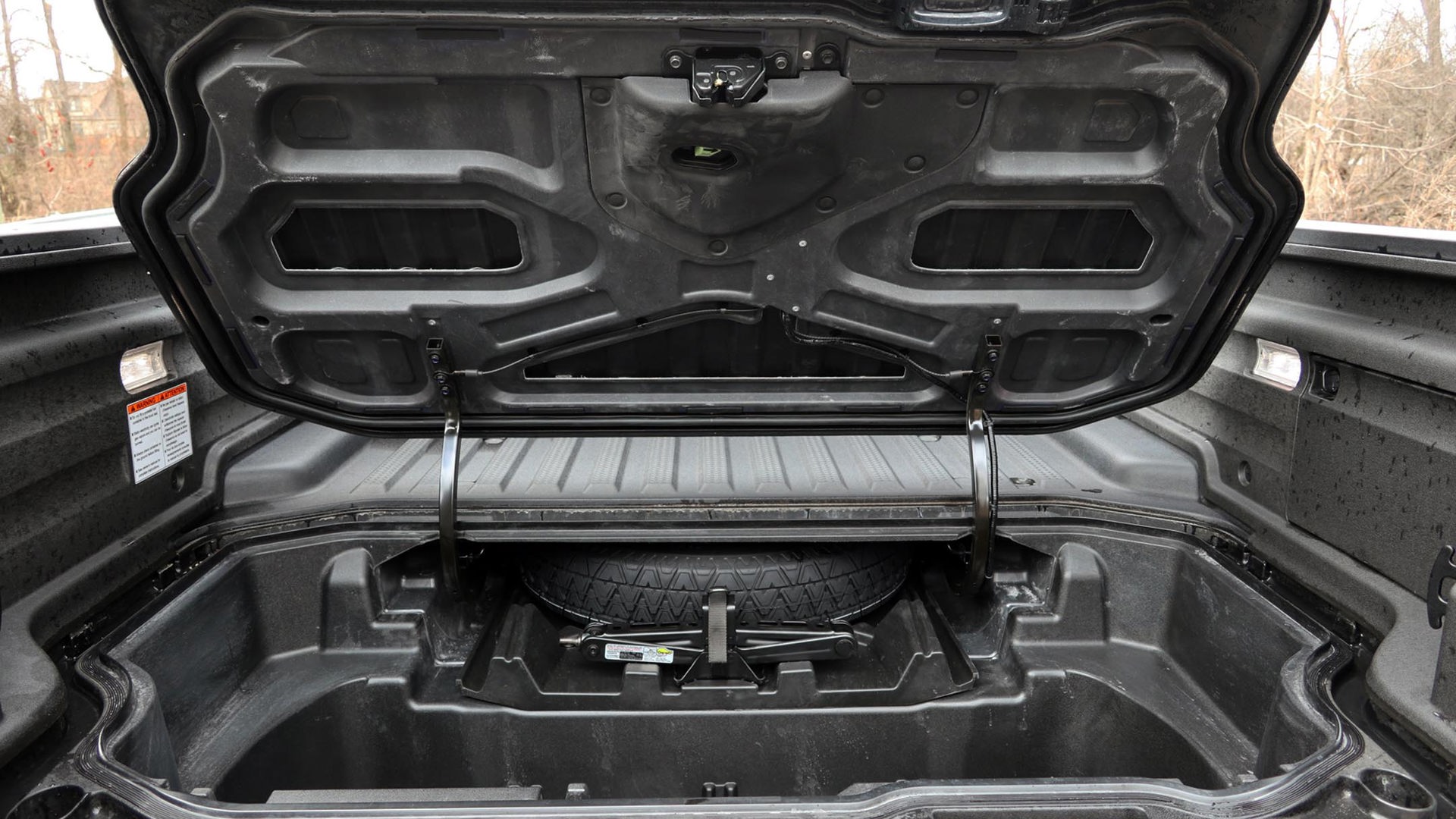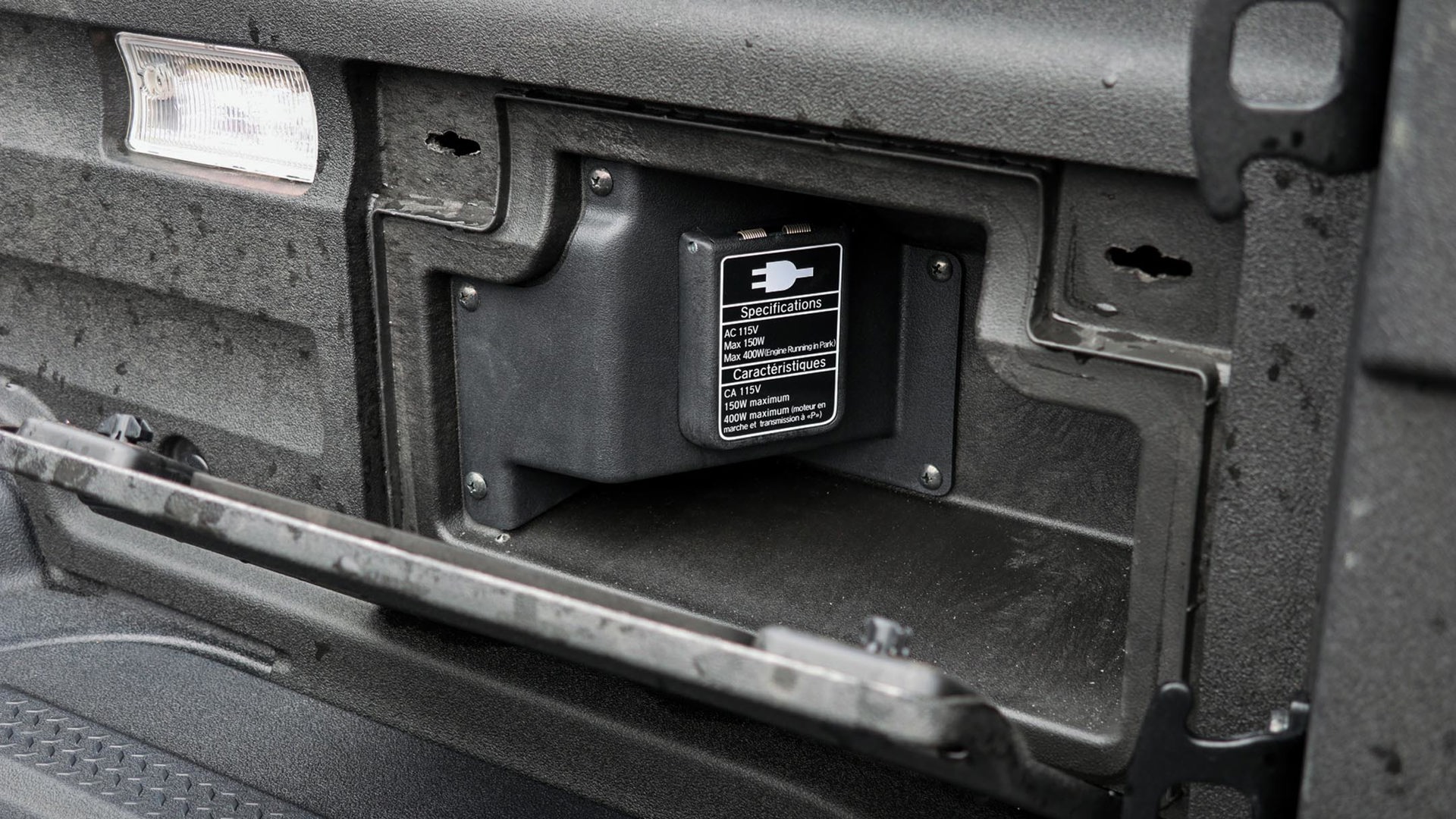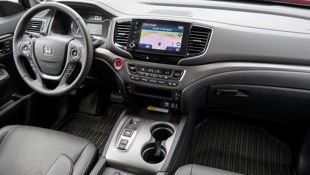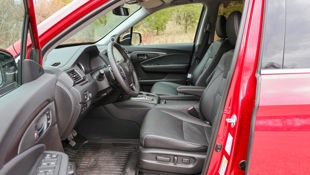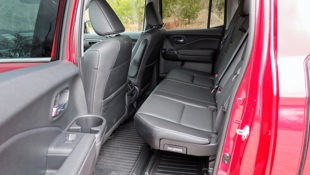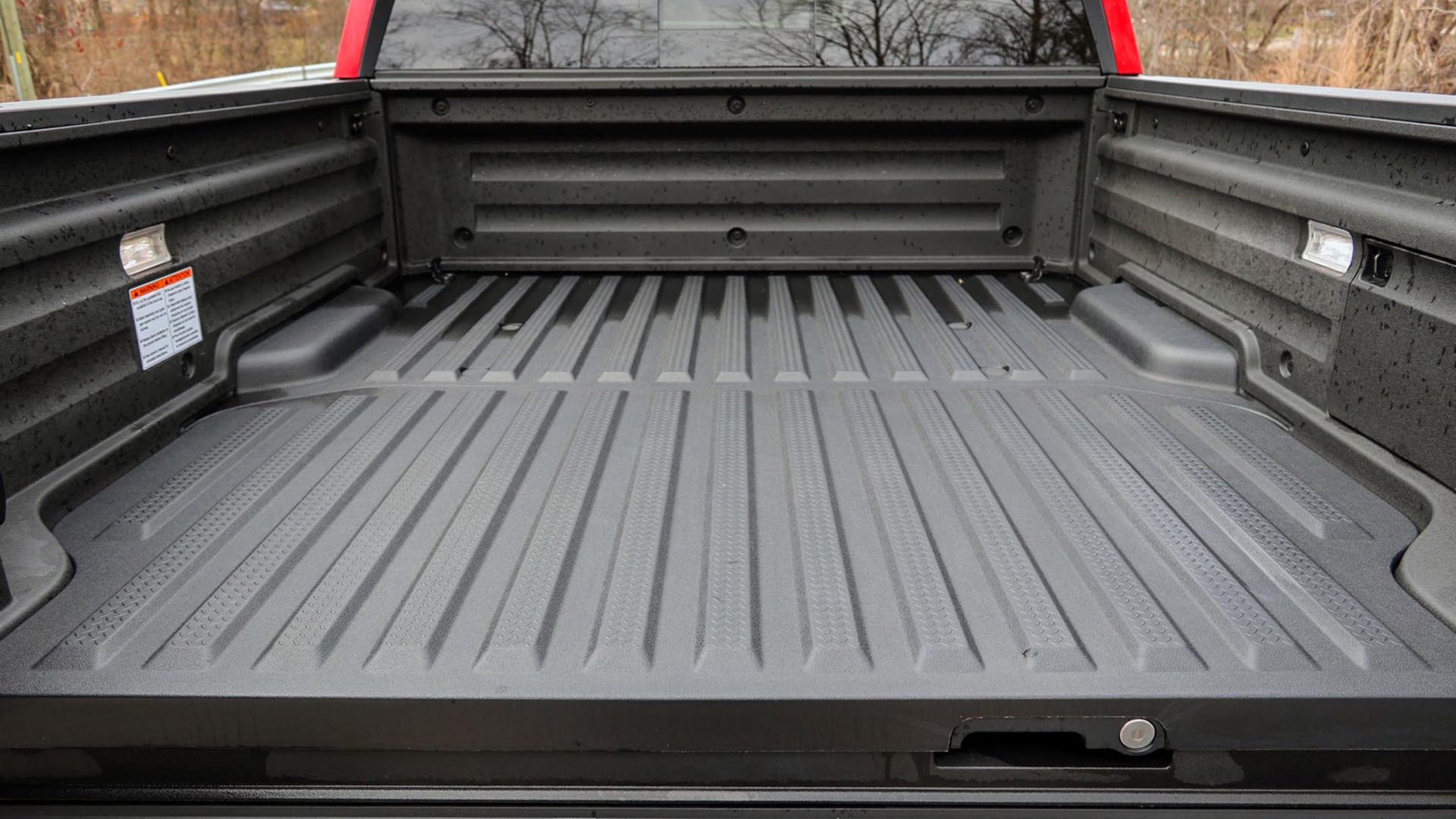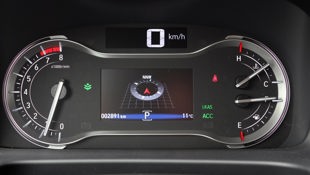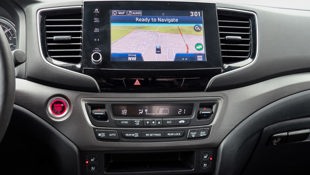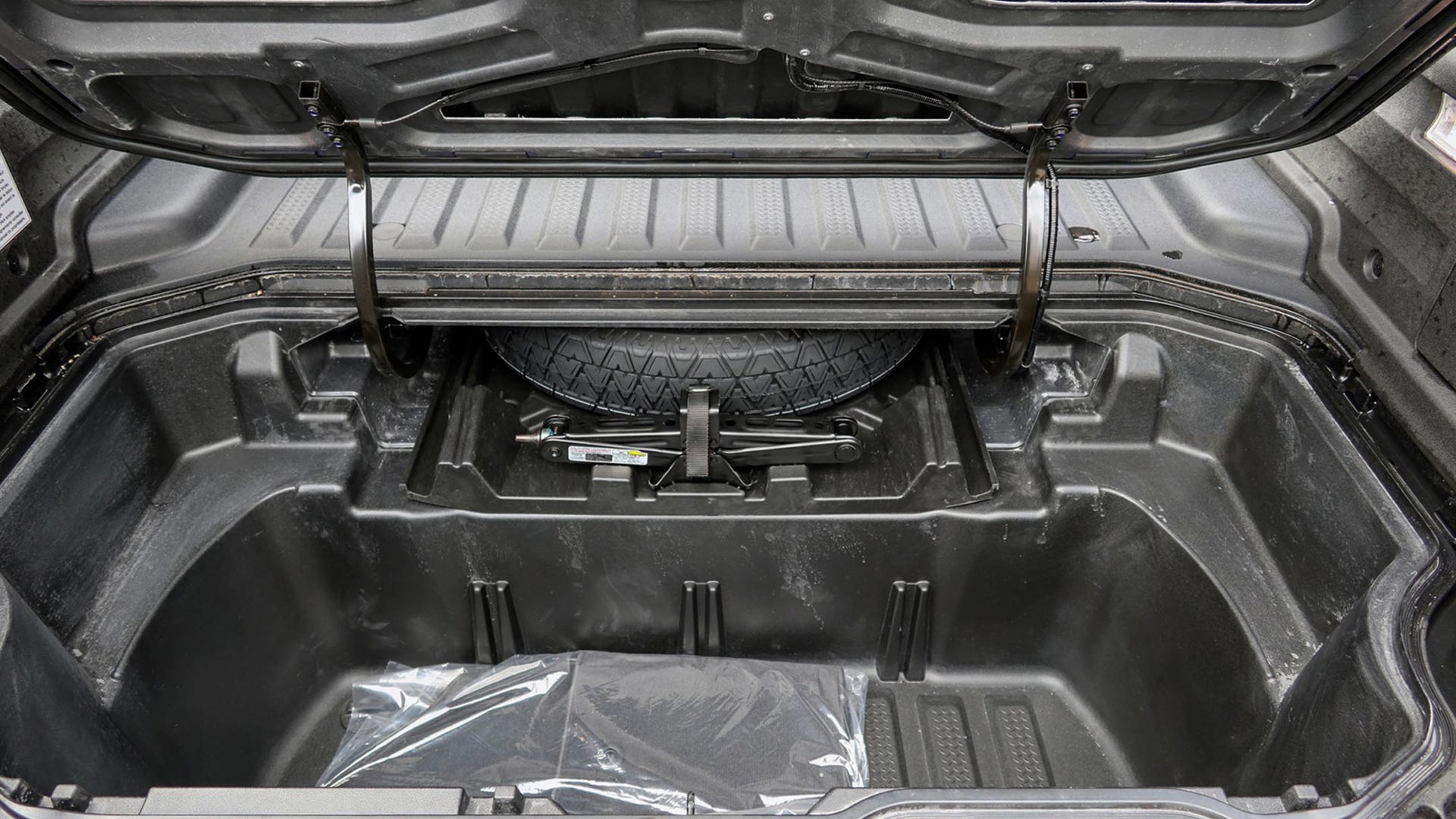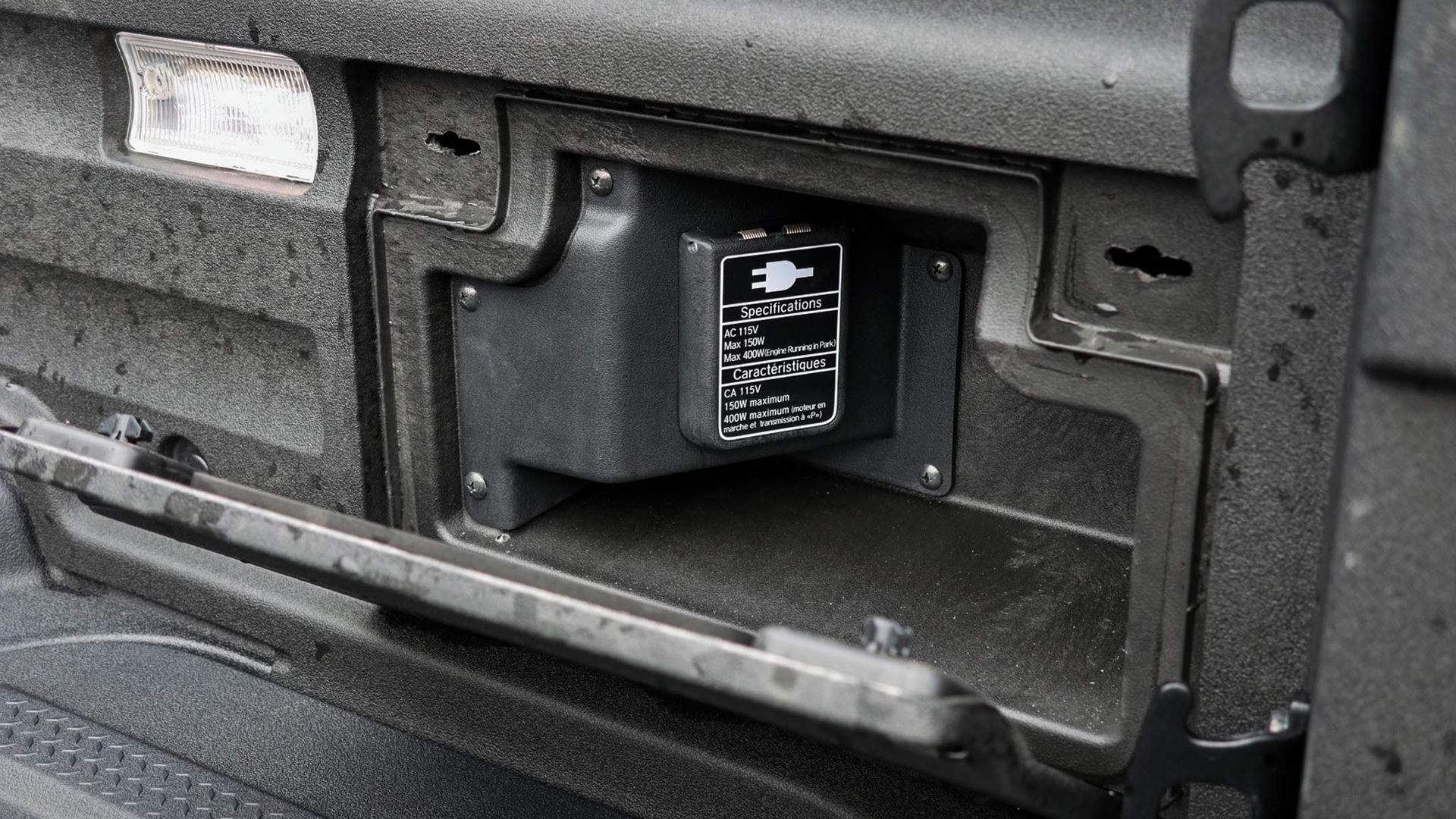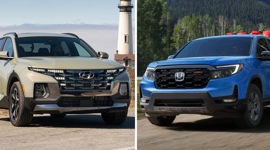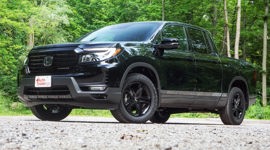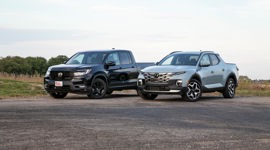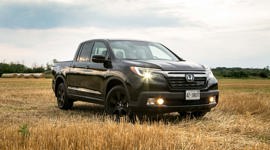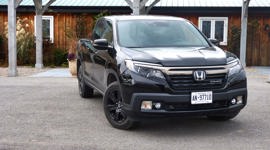My definition of a truck is “a vehicle with a bed that does what you need it to do.”
And by that alone, even though it’s based on an SUV platform rather than body-on-frame, the 2022 Honda Ridgeline will be exactly the right truck for many buyers. It received a styling update for 2021, and so it carries forward virtually unchanged into 2022.
It comes in Sport, EX-L, Touring, and Black Edition trims. I had the Touring, starting at $55,590 including a non-negotiable delivery fee of $1,950. I further had an HPD package at $3,500 and a coat of Radiant Red metallic paint for $300, bringing my truck to $59,390 before taxes.
Styling: 7/10
The Ridgeline definitely wasn’t a beauty when first introduced, but after a couple of makeovers over the years, it gained a truckier appearance that’s rather stylish. Still, this is a truck with a so-called HPD kit – short for Honda Performance Development – and I’m scoring it with that option included. Despite the name, the $3,500 doesn’t add any performance items. Instead, it’s a set of bronze wheels, black fender flares, some decals, and a unique grille that’s the only part of the package I like.
Taste is always subjective, but the black flares look mismatched; they should flow smoothly into the lower cladding, instead of their abrupt points that make them look like glued-on afterthoughts. The truck would also look much better with the black window surround from the Sport or Black Edition. With so much matte black elsewhere, the Touring’s chrome surround looks like cheap-flea-market stick-on stuff.
Safety: 8.5/10
The Ridgeline earns the top five-star crash rating from the United States National Highway Traffic Safety Administration (NHTSA), while over at the Insurance Institute for Highway Safety (IIHS), it gets a top “Good” score in most tests but only “Acceptable” for front passenger-side overlap and for child-seat tether-ease of use, and “Marginal” for headlights.
But there are several driver-assist safety technologies, and they’re standard on all trims. These include adaptive cruise control, lane-keep assist, blind-spot monitoring with rear cross-traffic alert, emergency front braking, automatic high-beam headlights, and the rearview camera that’s mandatory on all new vehicles.
Features: 9/10
In addition to the safety items, all Ridgeline trims include such features as 18-inch alloy wheels, a sunroof, power-sliding rear window, locking tailgate, tri-zone automatic climate control, remote start, 10-way driver and four-way passenger power-adjustable heated seats, a heated steering wheel, wireless charger, and eight-inch touchscreen with Android Auto and Apple CarPlay.
One step up from the base Sport, the EX-L adds such features as an auto-dimming rearview mirror, front and rear parking sensors, heated rear seats, and leather upholstery. The Touring tops that with a bed-mounted power outlet, ventilated seats, auto-dimming and power-folding side mirrors, rain-sensing wipers, navigation, and premium stereo with truck-bed audio system for tailgate parties. It uses “exciters” that turn the composite bed into one giant speaker cone rather than exterior speakers that might get damaged by moisture or shifting cargo.
User Friendliness: 8/10
For the most part, the Ridgeline’s controls are simple to operate. There’s a dial for stereo volume, toggle switches for the temperature, hard buttons for the heated and ventilated seats, and the centre touchscreen’s menus are easy to navigate, with tabs for the map and audio always at the top of the screen.
But we part ways on the button-style shifter. A traditional lever would occupy the same space and not require looking down for a button. Another issue is the digital speedometer, which sits above the configurable portion of the instrument cluster but can’t be added into that middle spot. I’m not that tall, and if I raise the seat, I can’t see my speed because the steering wheel’s in the way.
Practicality: 9.5/10
The Ridgeline outweighs its competition for its practical touches, starting with its two-way tailgate. It drops conventionally or opens sideways like a door, so you can reach items without stretching over the open gate.
The bed is 5-foot-3 – pretty much the standard “short bed” option on rivals. But lift the bed floor and you’ll find a 207-L locking trunk under it; and the spare tire is conveniently tucked in at the top of it. The composite bed doesn’t need an add-on bed liner. Payload capacity ranges from 674 to 694 kg (1,486 to 1,530 lb), depending on trim.
Usefulness continues inside with a deep centre console, and with the clever rear seats. The cushions are perched on front-mounted metal legs, so you can slide items under the seats even if someone’s sitting on them. The legs fold up when you lift the cushions, and you have the whole flat floor for storage.
Comfort: 8/10
It’s easy to get in and out, and comfortable once you get in. The seats are supportive, and leg- and headroom are good in both the front and rear seats. Heated seats and steering wheel are standard on all trims, and my Touring further added front ventilated seats, which I dislike, but they’re a “nice to have” for some.
Unusually in the segment, there are separate temperature controls for the rear-seat passengers – which you can lock out from the front, if necessary – and heated rear seats in all but the base Sport trim.
Power: 8/10
All Ridgeline trims are powered by a 3.5L V6 that makes 280 hp and 262 lb-ft of torque and comes mated to a nine-speed automatic transmission. It’s a good fit to the truck, with strong and linear acceleration, plenty of power for highway passing, and smooth shifts. But maximum towing capacity is only 2,267 kg (5,000 lb), trailing midsize competitors that can go as high as 3,492 kg (7,700 lb).
Driving Feel: 8/10
It’s based on an SUV platform and the Ridgeline drives like one – and that’s a good thing. Some competitors can be bouncy, or lose a bit of balance on curves, but the Ridgeline is an all-round pleasant performer. The ride is smooth, it’s well-planted around corners with minimal body roll, and it feels solid and confident on the highway.
All-wheel drive (AWD) is standard, with the front wheels getting most of the power under normal conditions. When traction is needed, up to 70 per cent can go to the rear and is then divided between the left or right rear wheels as necessary. It’s more off-road-capable than you would think, although it lacks the ground clearance of rivals that are aimed more at the great outdoors. But realistically, that isn’t where the Ridgeline is intended, and that lower-slung stance gives it that pavement-friendly performance and makes it easier to get in and out.
Fuel Economy: 8.5/10
The Ridgeline’s V6 includes both an idle stop-start system, which shuts off the engine when stopped for a light (there’s a button to temporarily disable it if you prefer), and cylinder deactivation, which seamlessly shuts off cylinders when you’re driving but full power isn’t needed. Its Natural Resources Canada (NRCan) numbers are 12.8 L/100 km in the city, 9.9 on the highway, and 11.5 in combined driving. In my week with it, I was almost on point with 11.6 L/100 km.
That official combined number is better than V6-equipped rivals with four-wheel drive, from the Chevrolet Colorado at 12.1 L/100 to the Nissan Frontier at 12.3. Only the Ford Ranger undercuts it, at 10.9 L/100 km, but it comes only with a turbocharged four-cylinder engine.
Value: 8/10
The Ridgeline starts at $48,390 and finishes up at $57,390 across its range, including its delivery fee. That’s pricey compared to other midsize trucks in their crew cab configurations and four-wheel drive, where the Chevrolet Colorado starts at $36,898; the Ford Ranger at $42,085; Toyota Tacoma at $42,240; and Nissan Frontier at $46,448. At the upper end, the only trucks to break fifty grand in their highest trims are the GMC Denali at $51,398, and Tacoma at $55,280.
But for the price, the Ridgeline comes very well-equipped, with features on its base trim that others don’t have. Its audience likely isn’t looking for a bare-bones work truck or roughest-styling camping, but for amenities at all levels. You can also keep the price down a bit by stopping at the Touring, since the HPD package or Black Edition trim are only appearance add-ons.
The Verdict
I like trucks, and I really like the 2022 Honda Ridgeline. There are some who scoff and say it’s not a “real truck” for its sport-ute heritage and AWD instead of four-wheel drive, but this is about what it is, not what it isn’t. If you want a lot of features and don’t plan on heavier-duty towing, this is a great-driving, practical, and comfortable choice that shouldn’t be overlooked.
| Engine Displacement | 3.5L |
|---|---|
| Engine Cylinders | V6 |
| Peak Horsepower | 280 hp @ 6,000 rpm |
| Peak Torque | 262 lb-ft @ 4,700 rpm |
| Fuel Economy | 12.8 / 9.9 / 11.5 L/100 km cty/hwy/cmb |
| Cargo Space | 207 L in-bed trunk |
| Model Tested | 2022 Honda Ridgeline Touring |
| Base Price | $53,640 |
| A/C Tax | $100 |
| Destination Fee | $1,950 |
| Price as Tested | $59,490 |
|
Optional Equipment
$3,800 – HPD Package, $3,500; Radiant Red Metallic paint, $300
|
|
